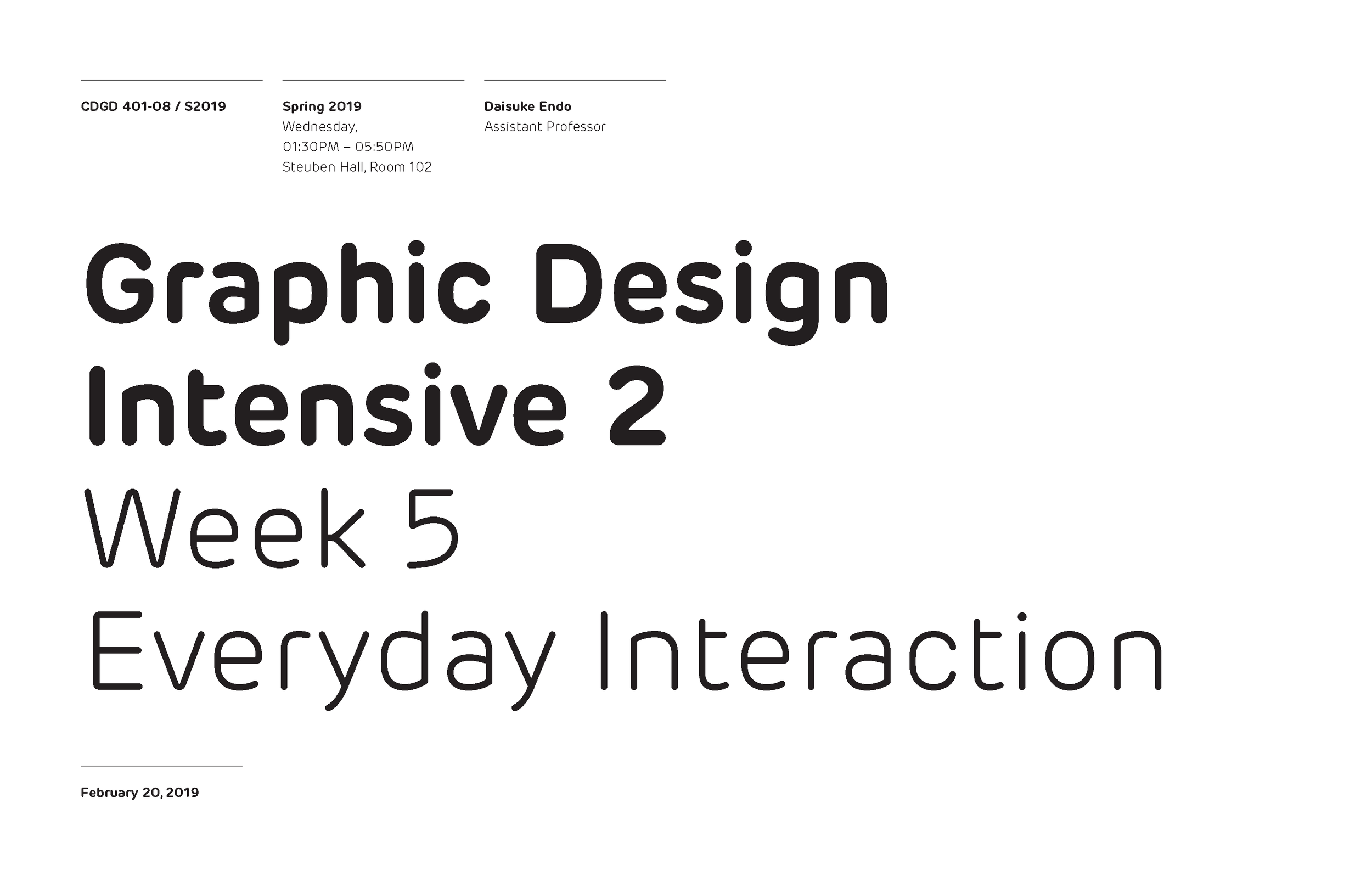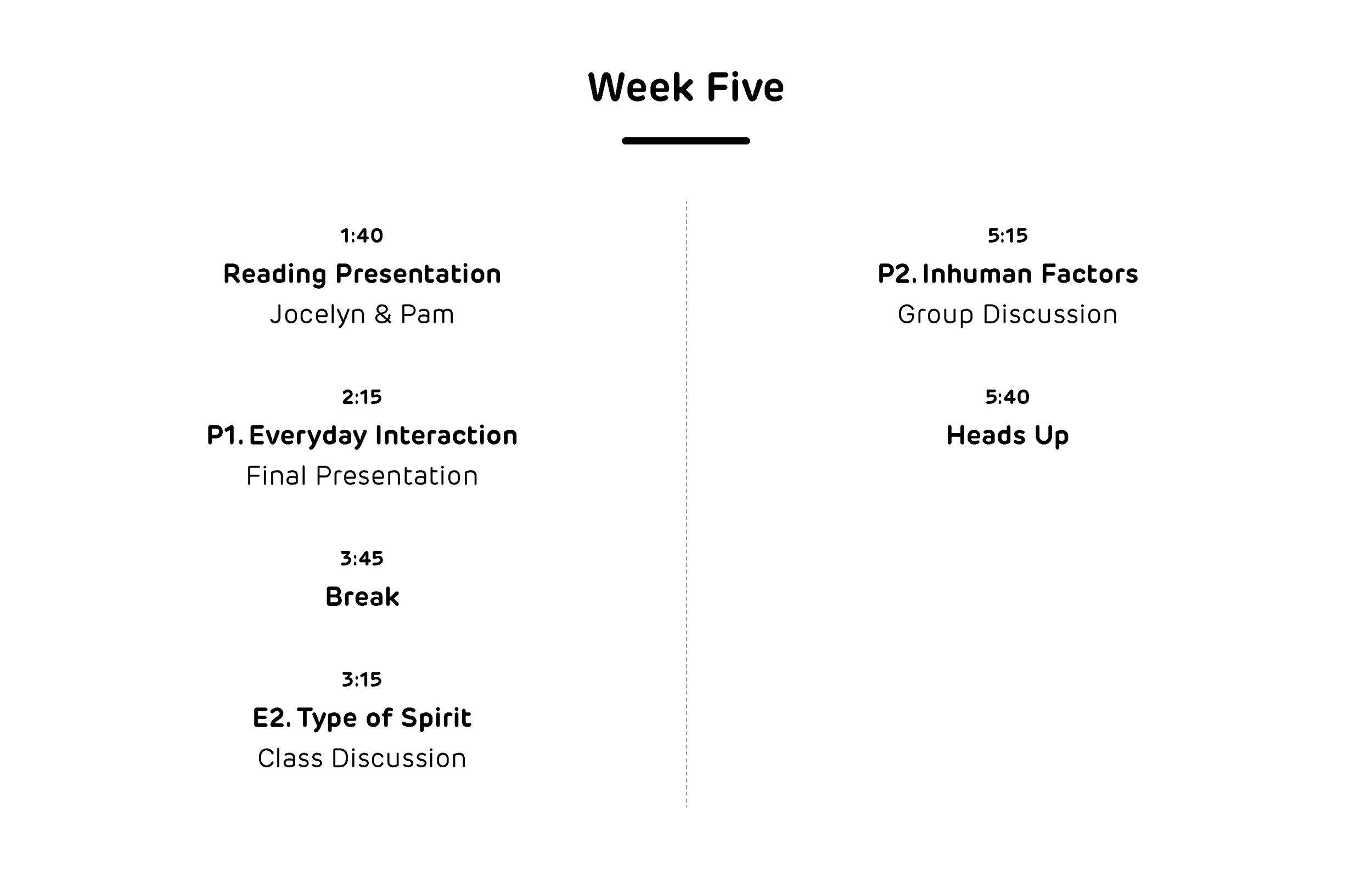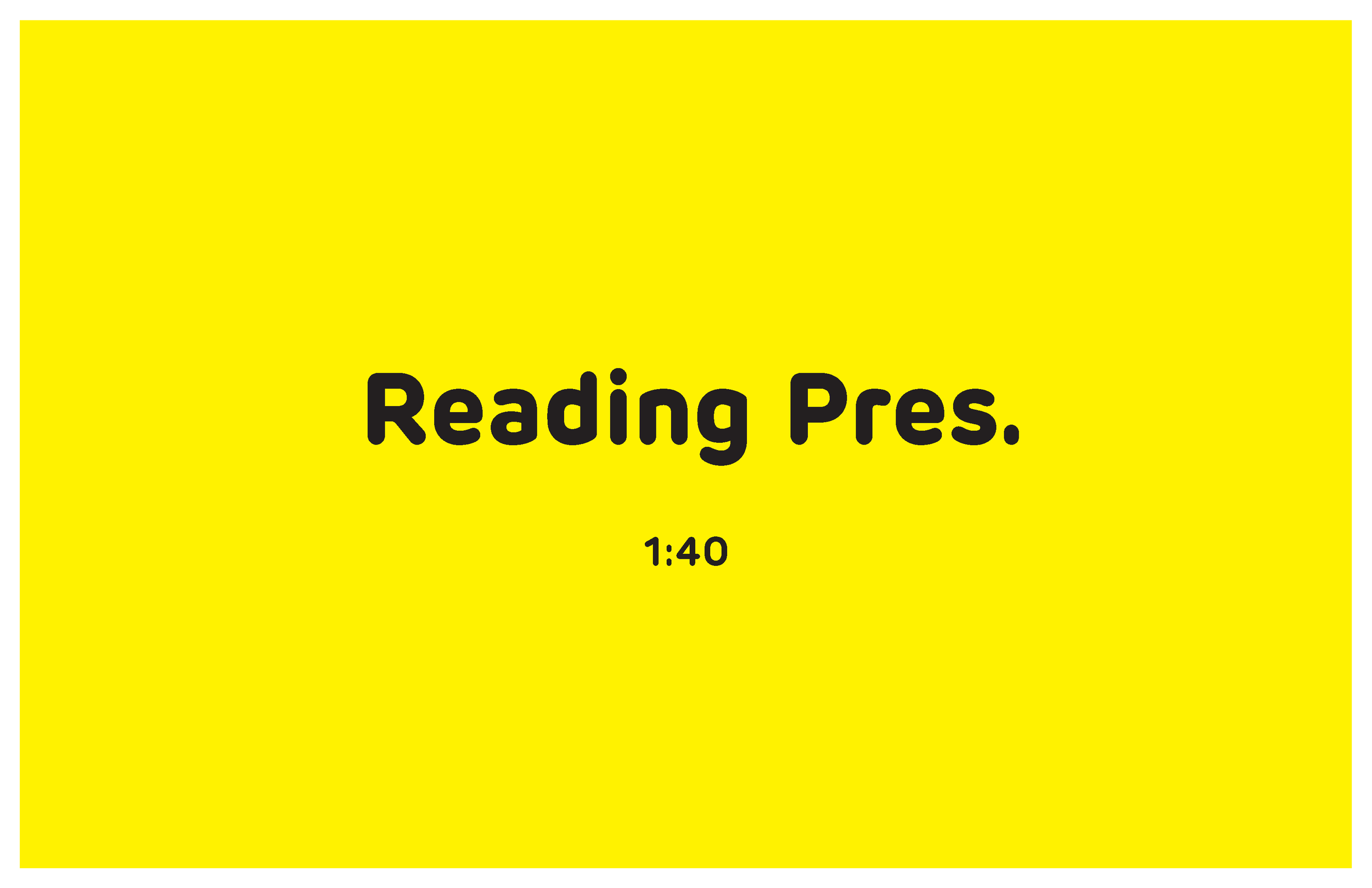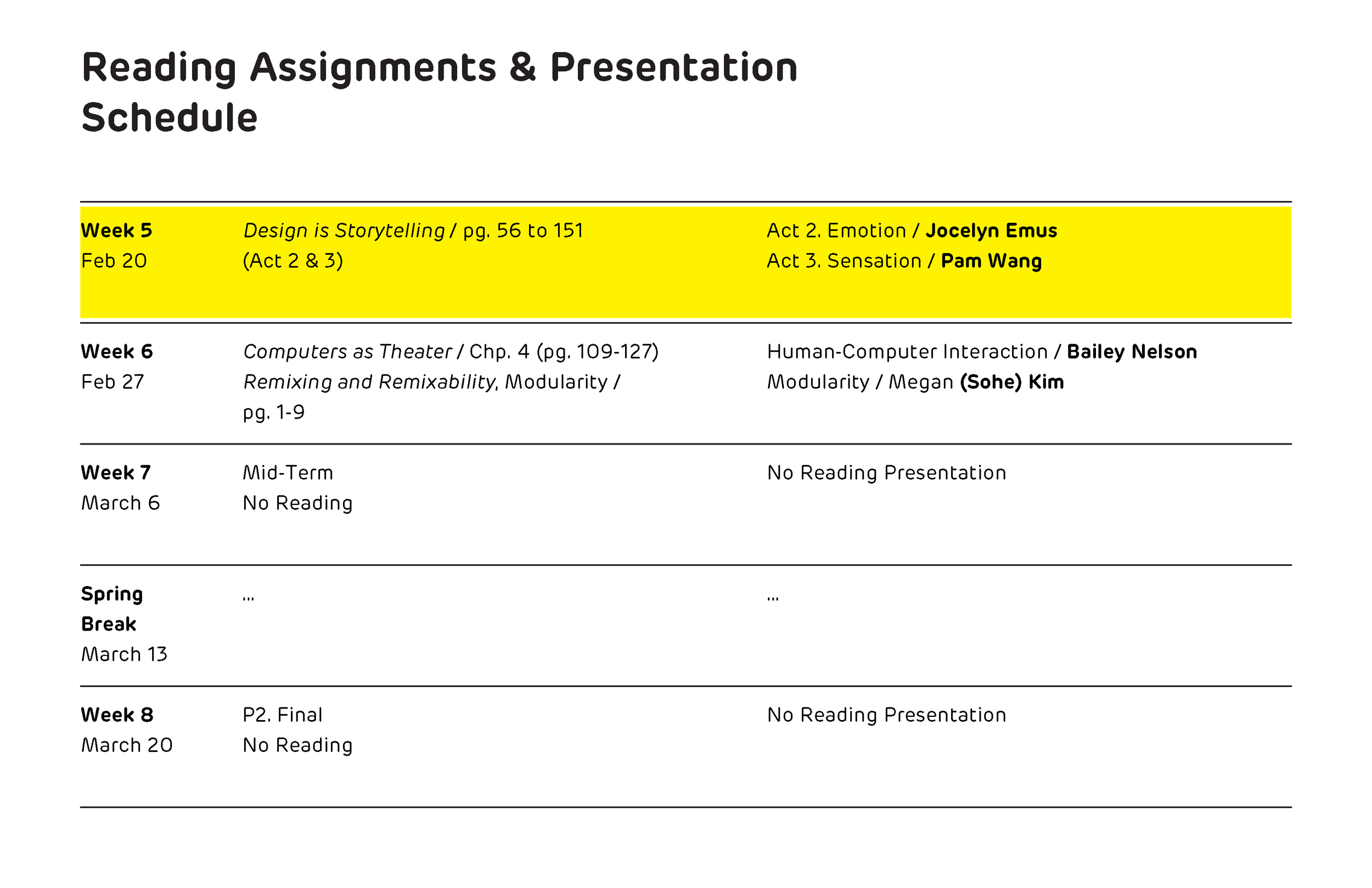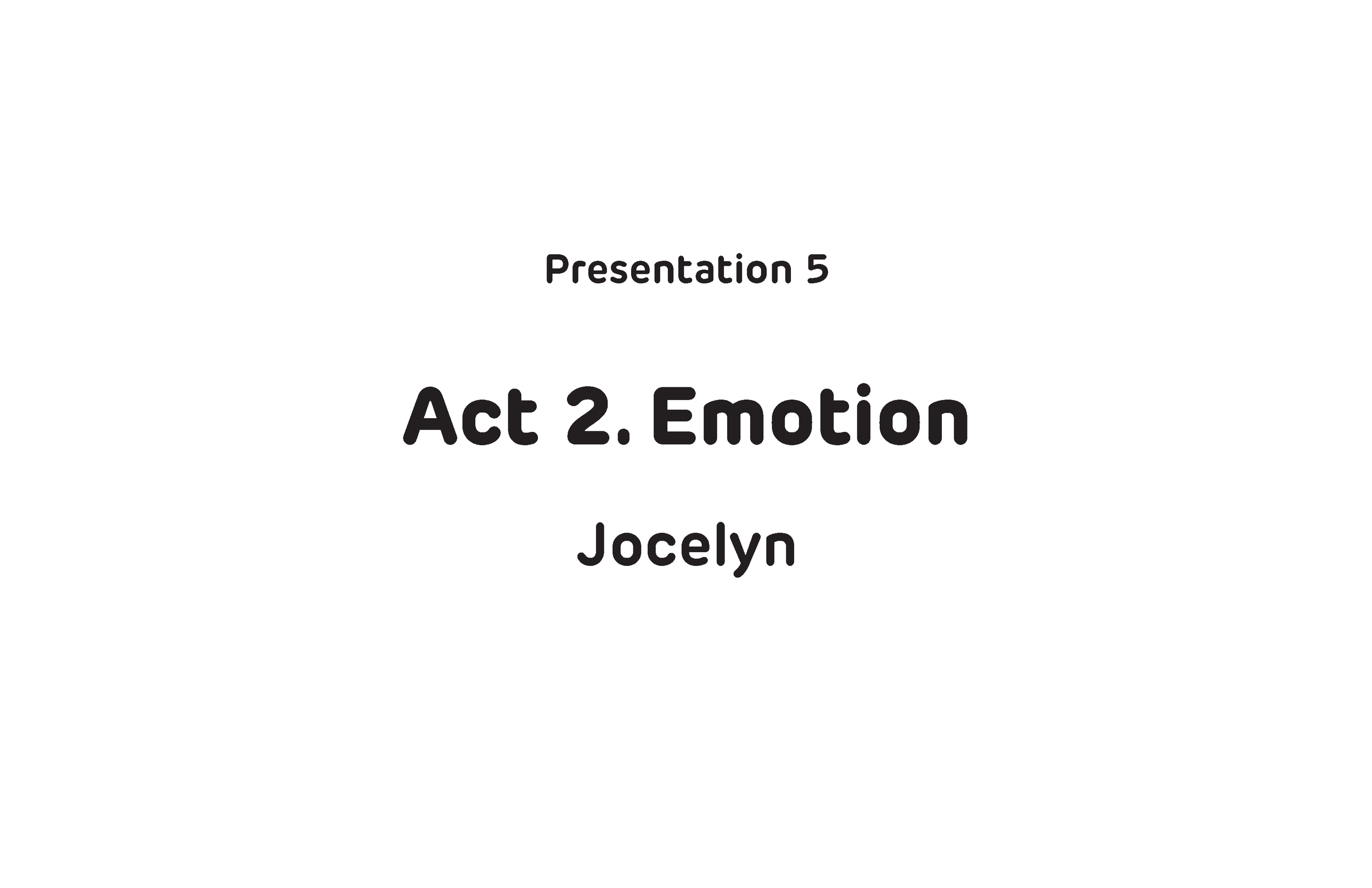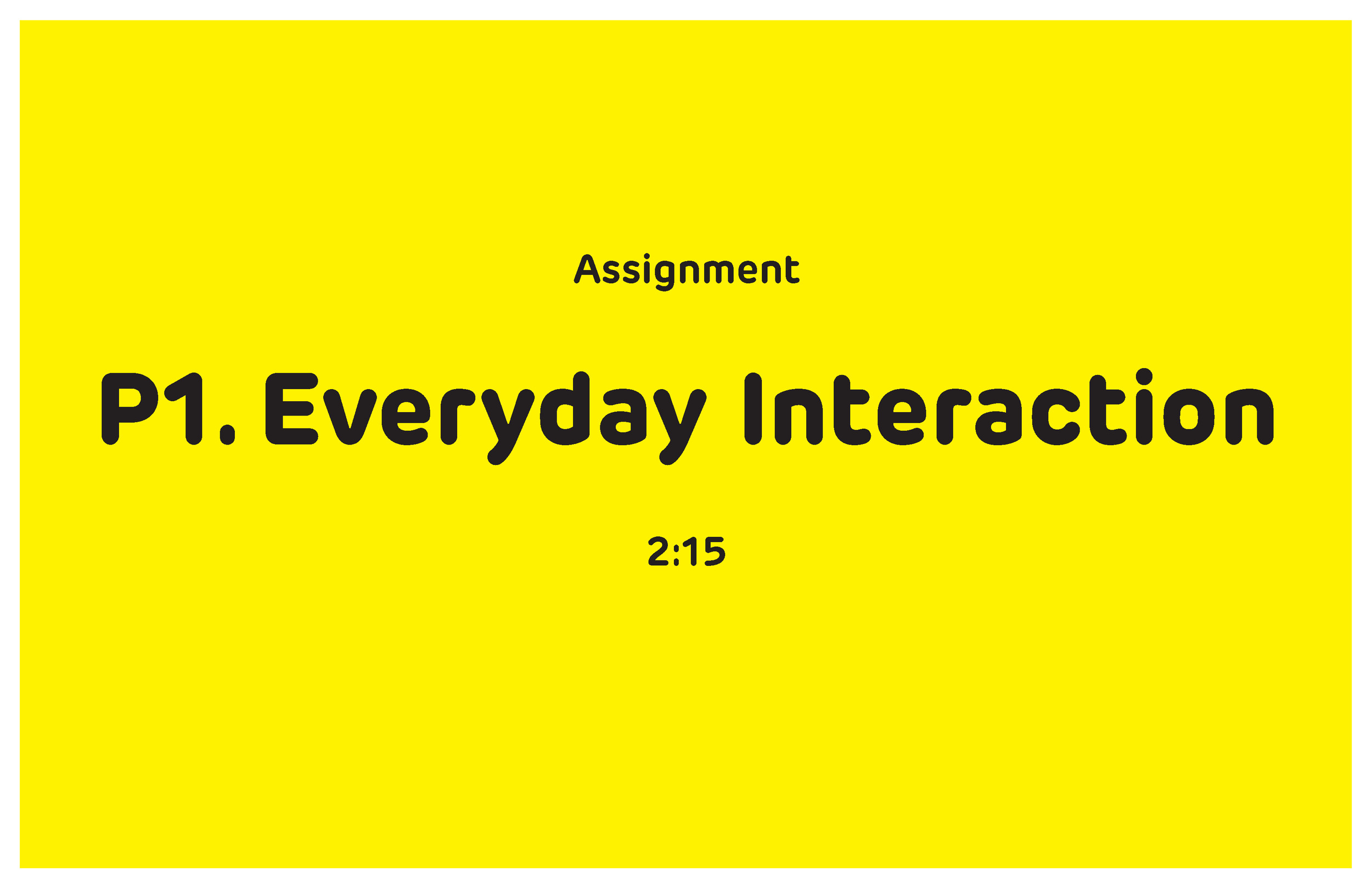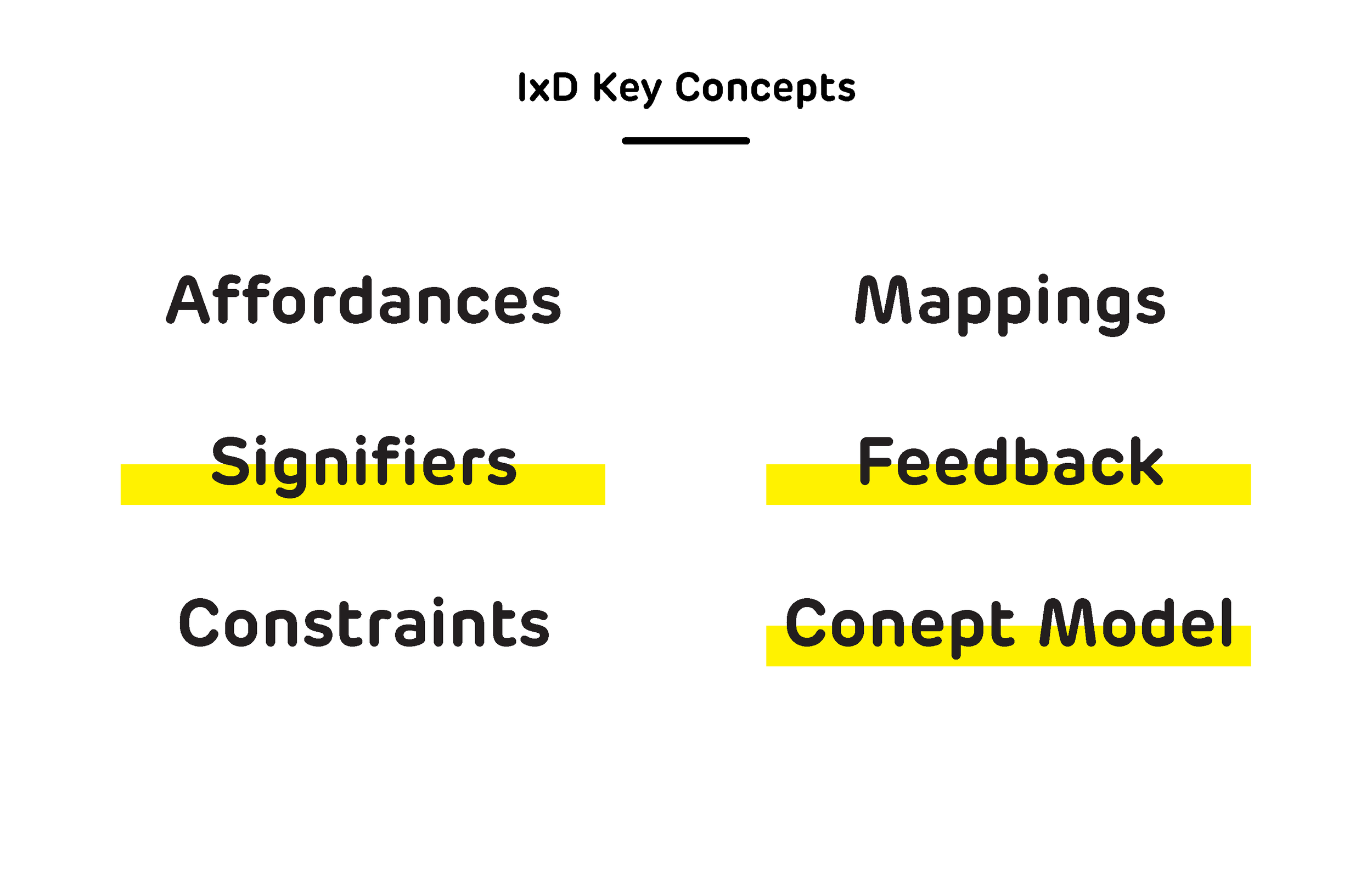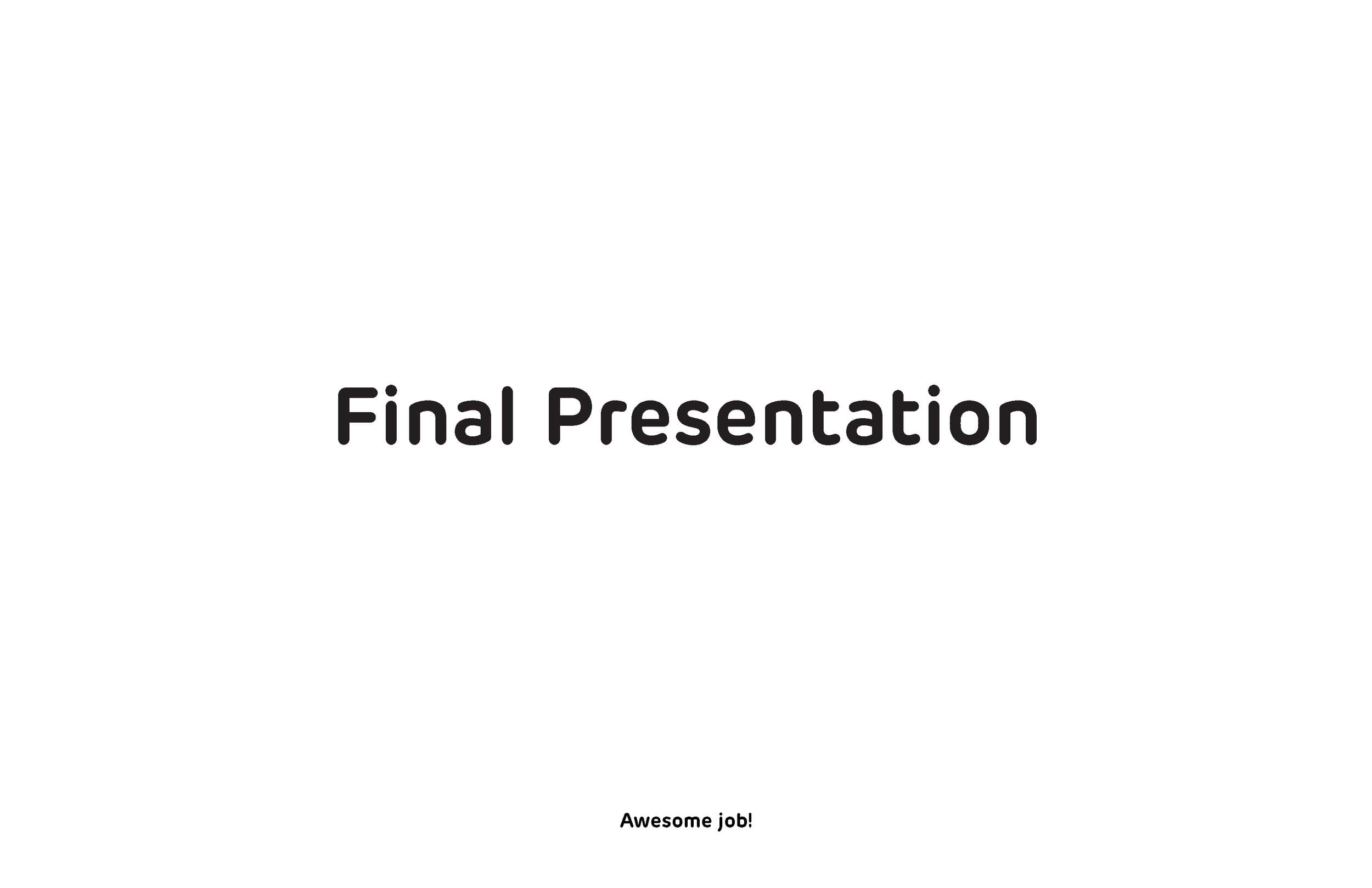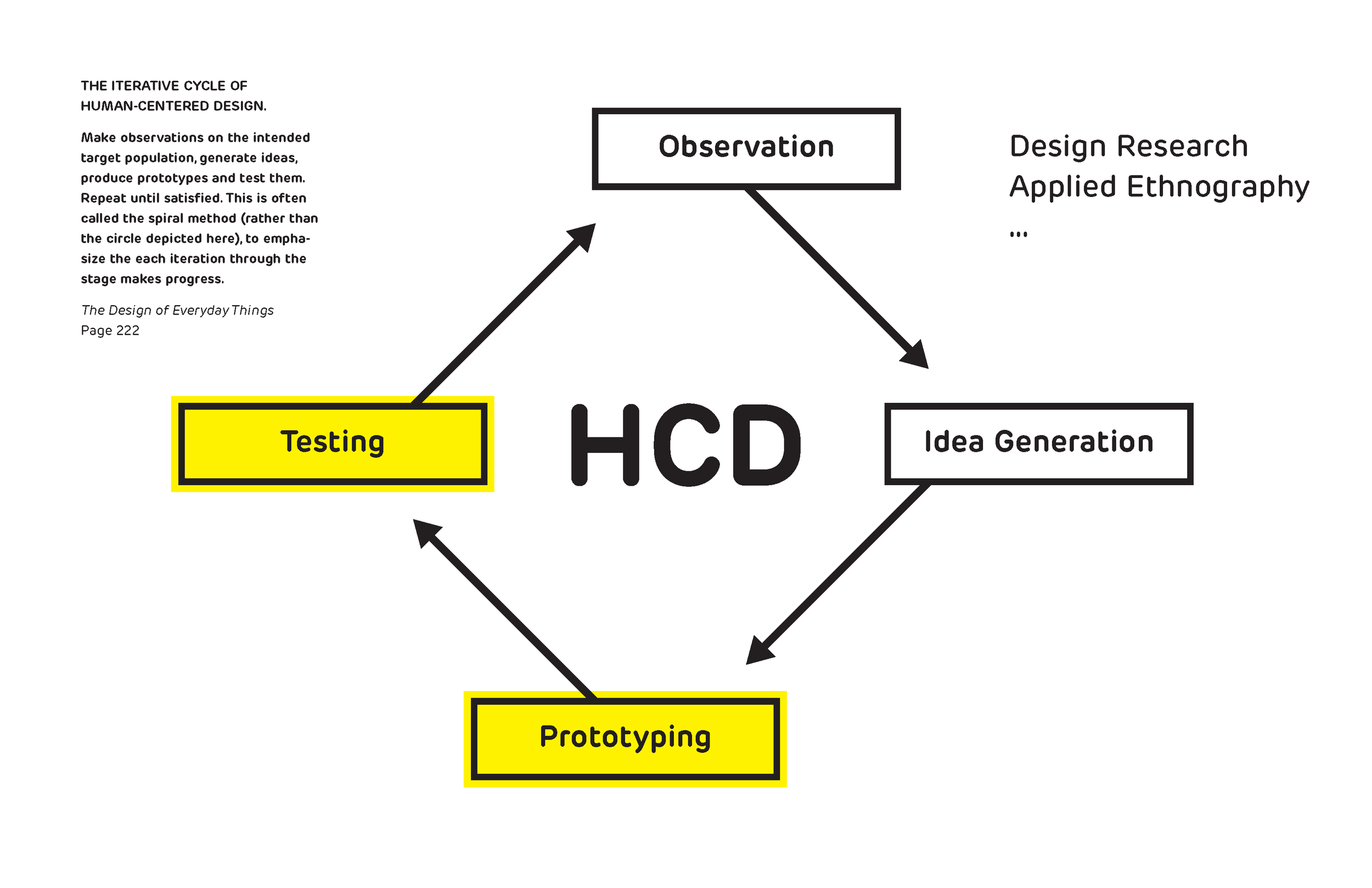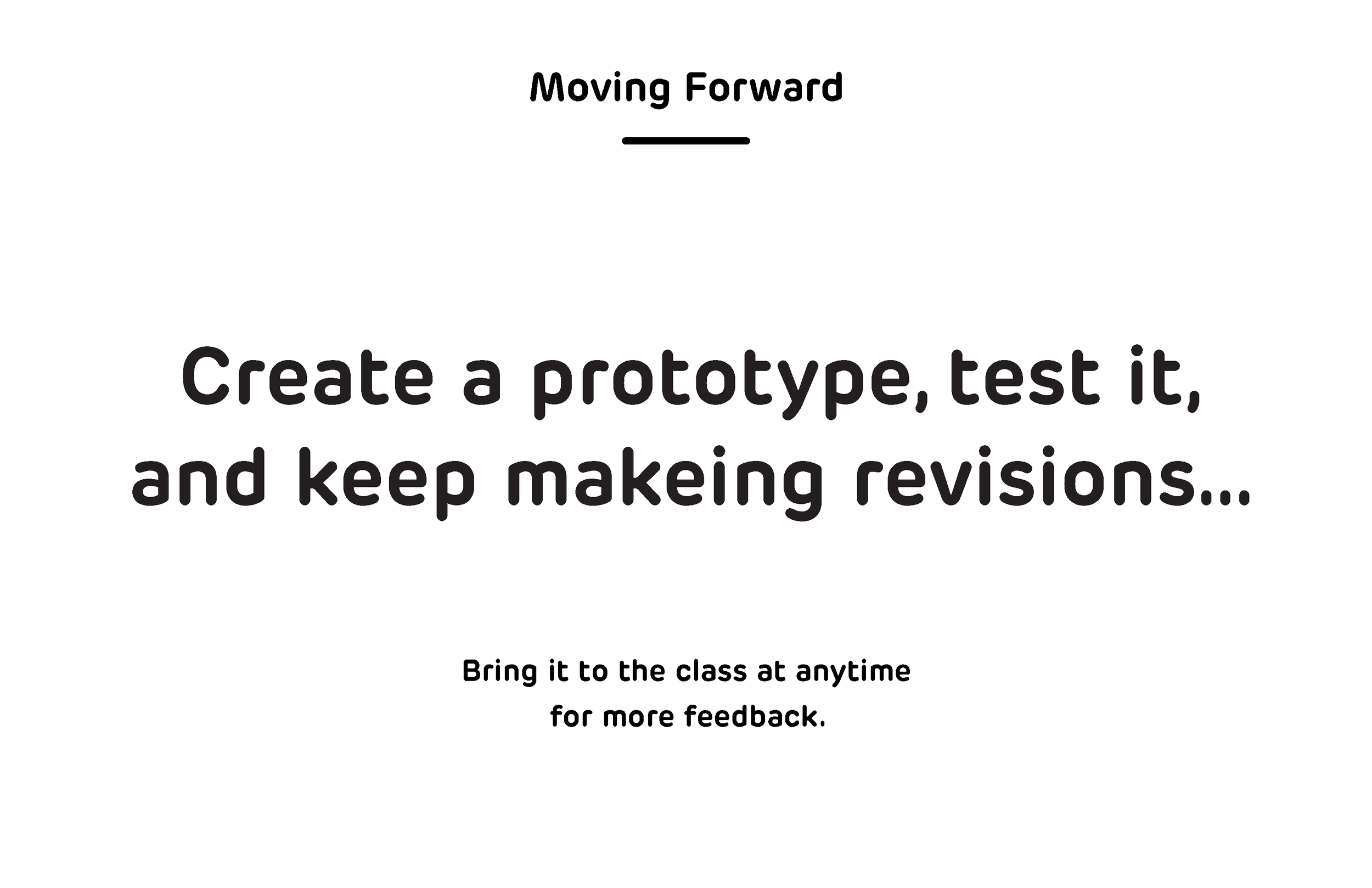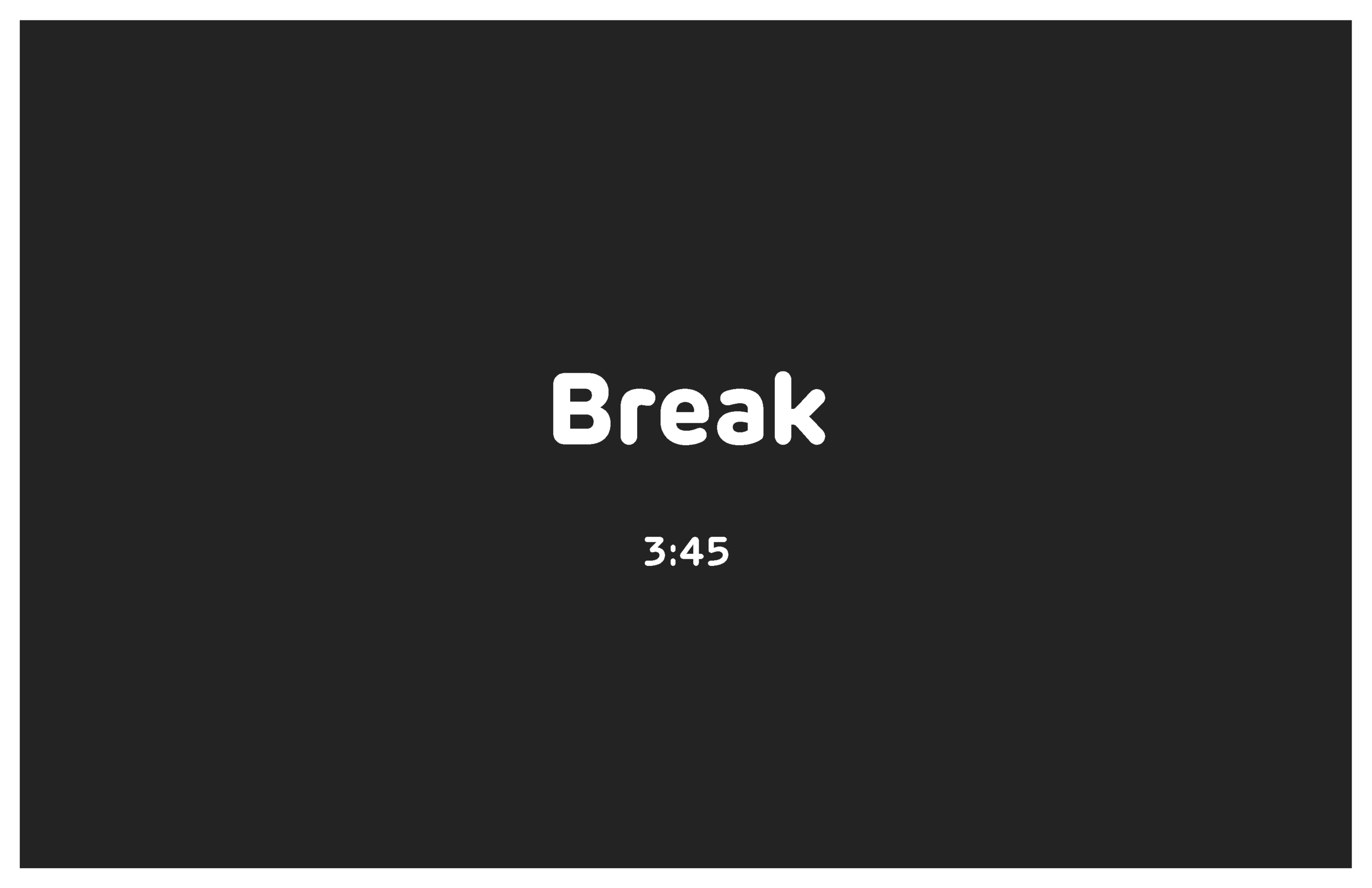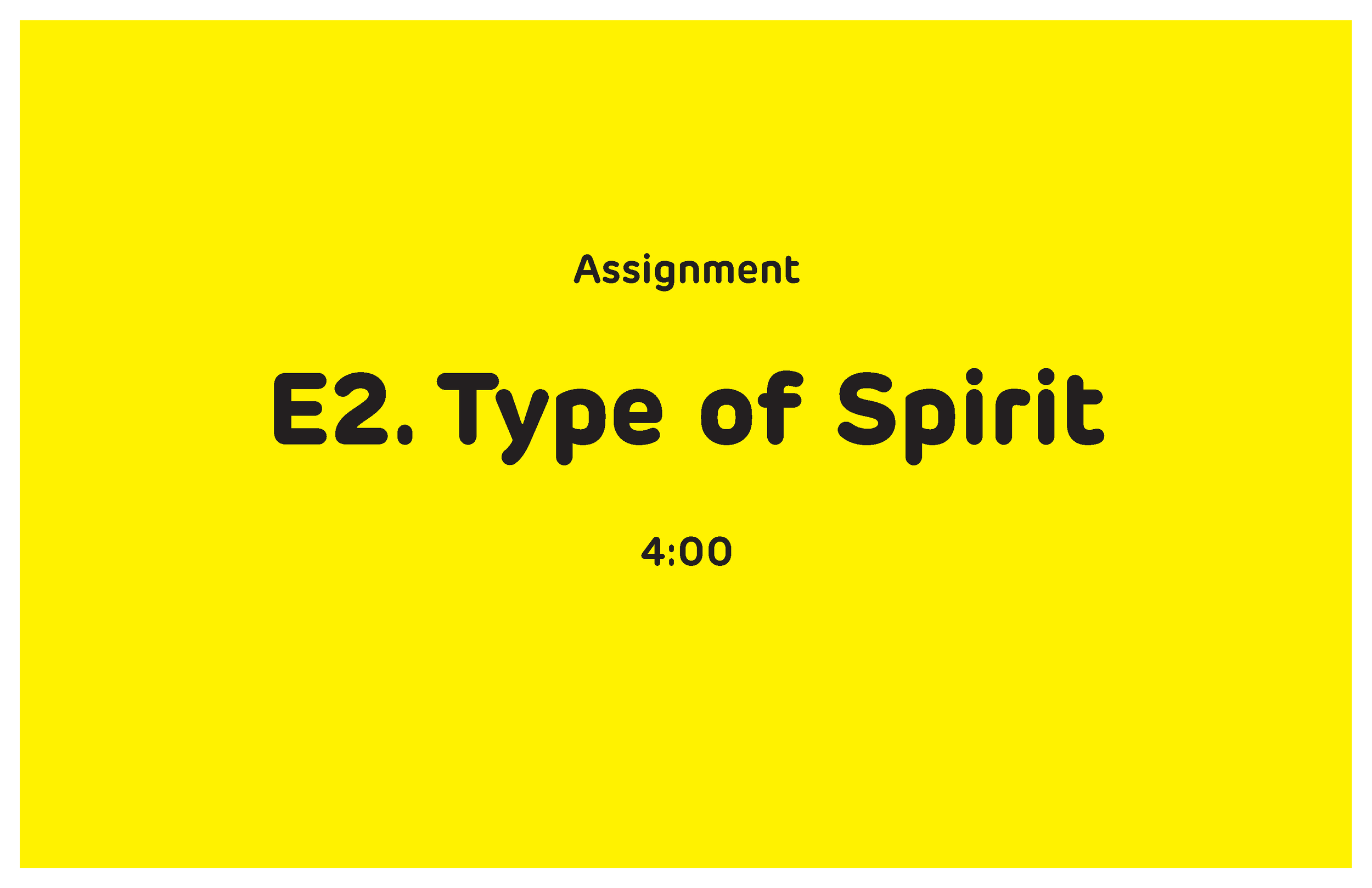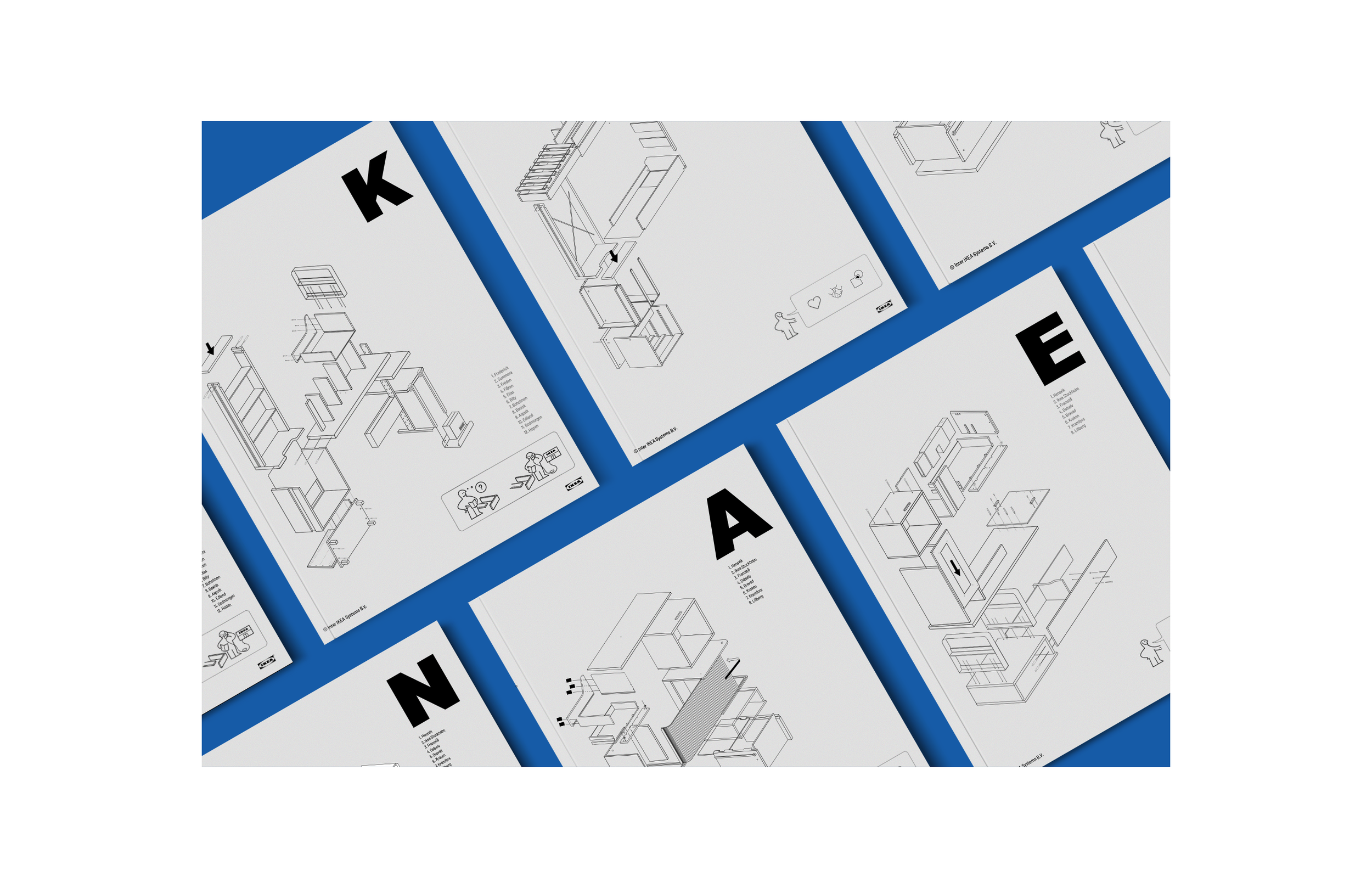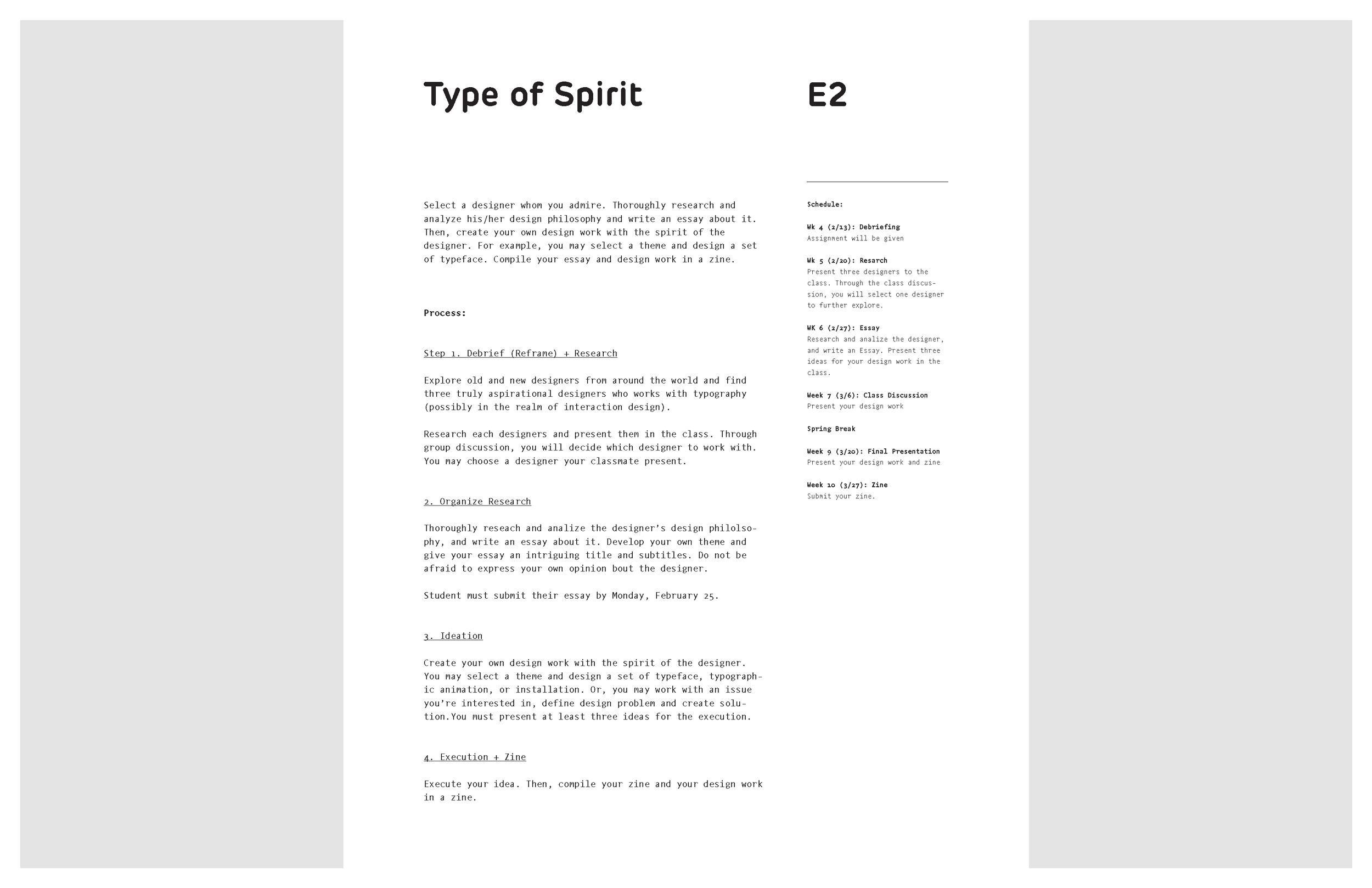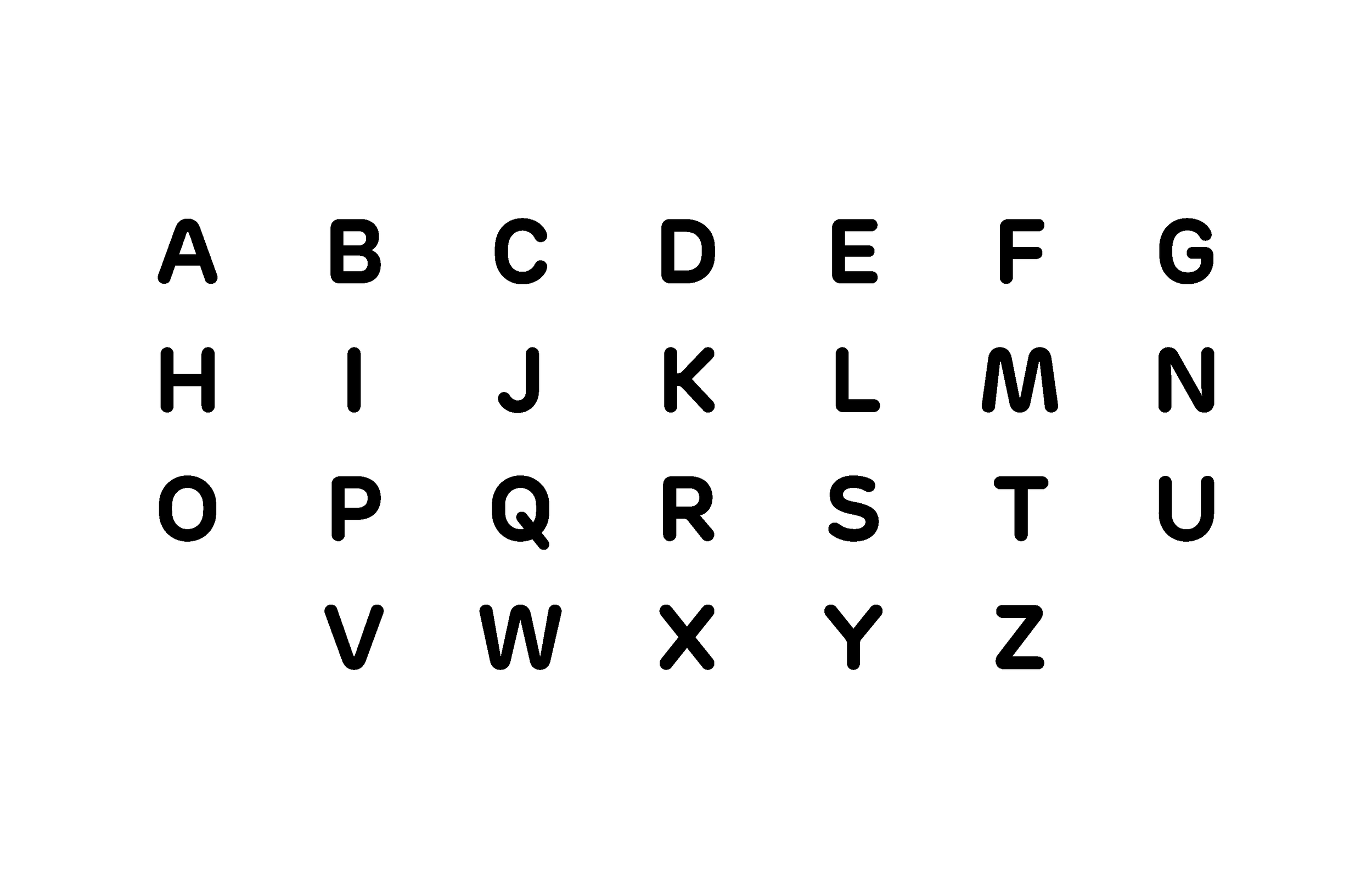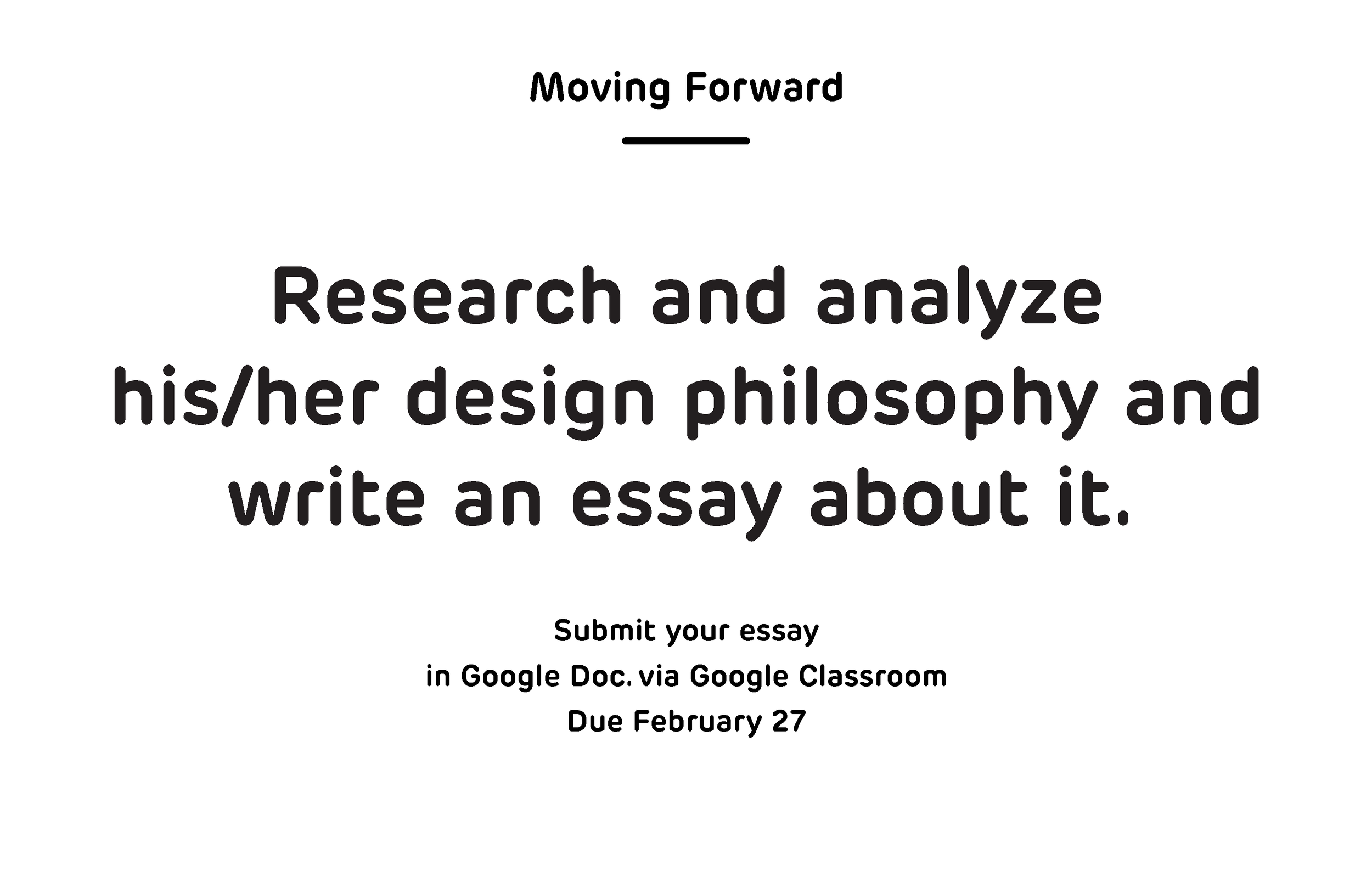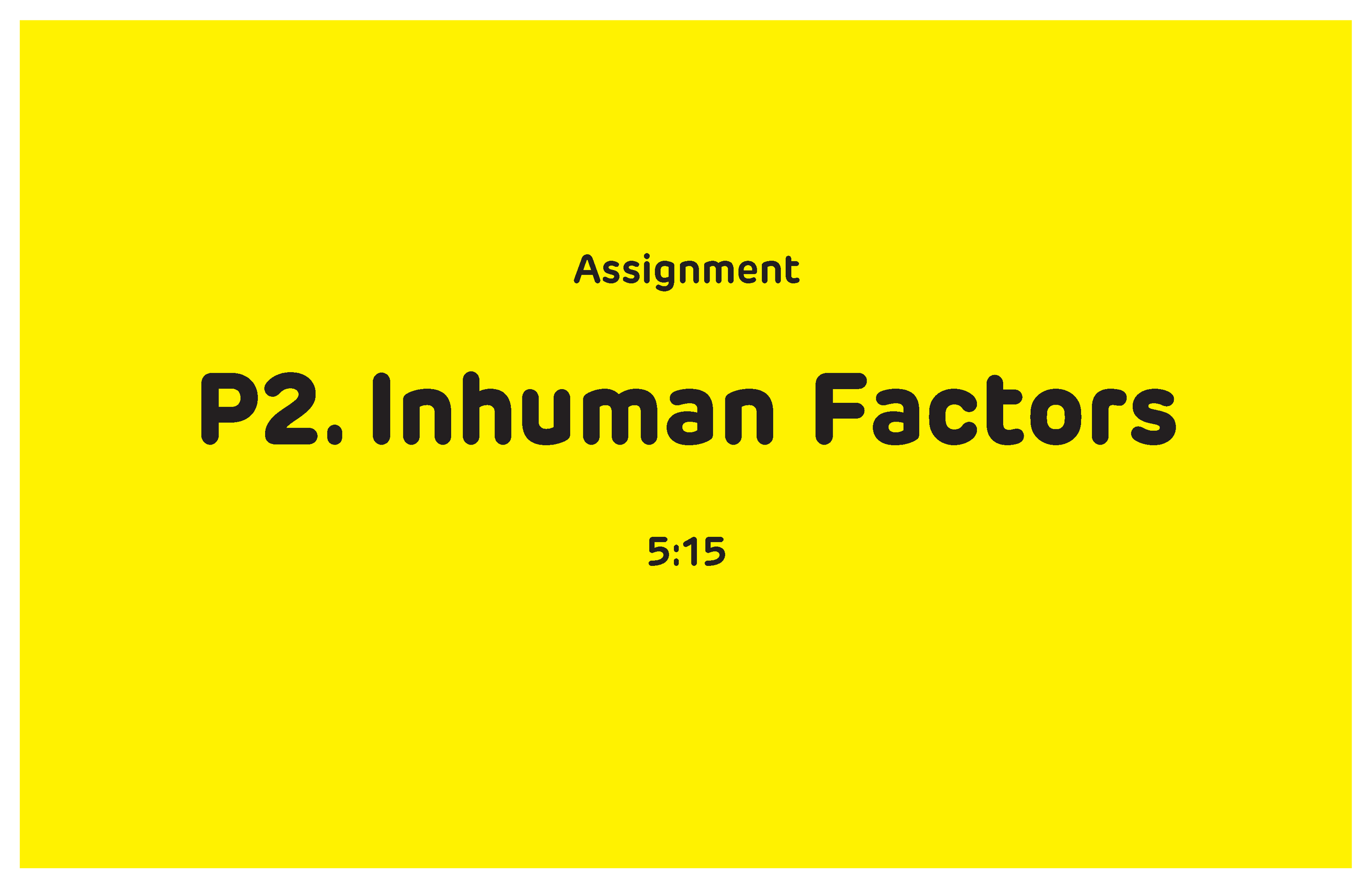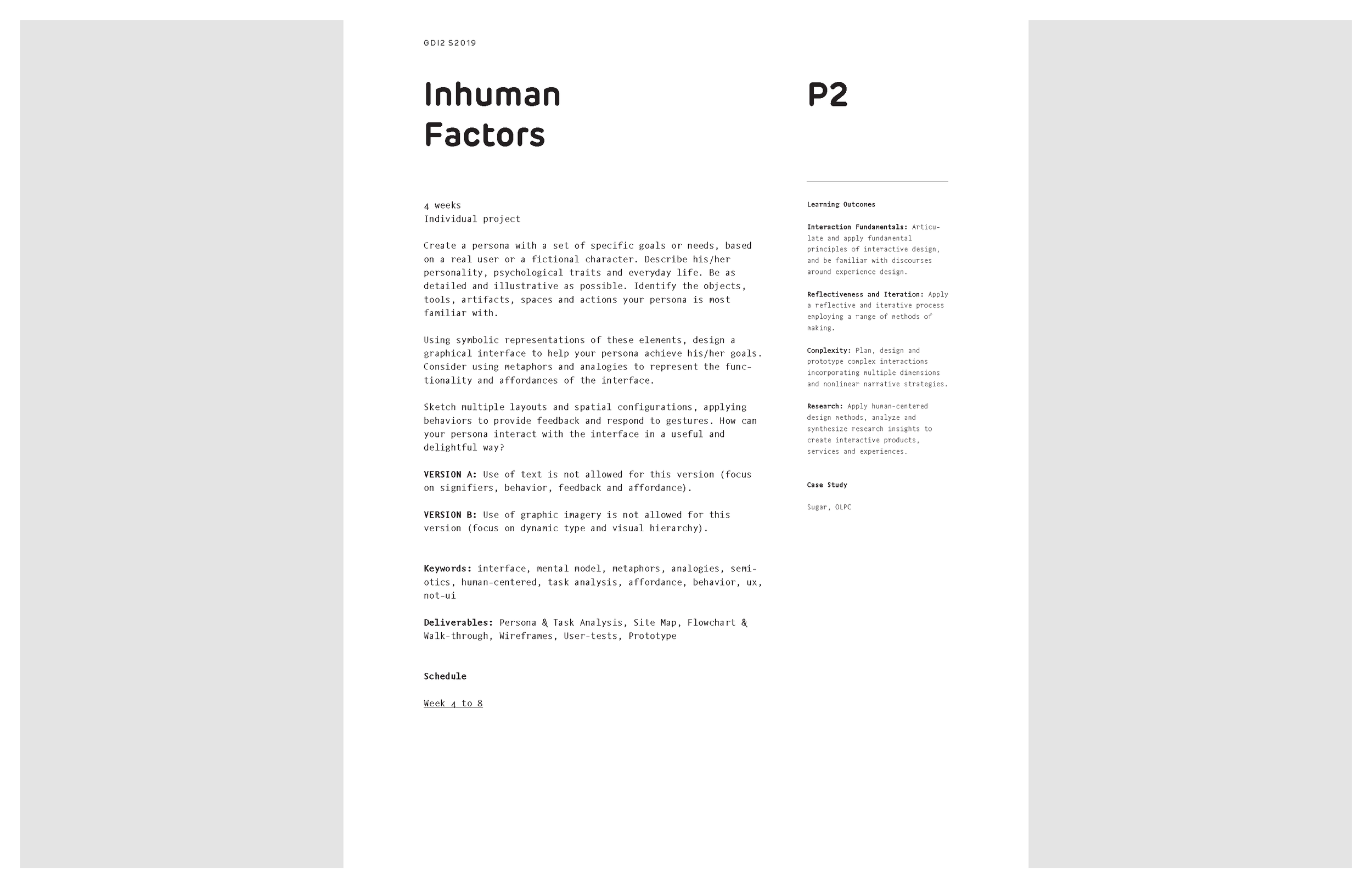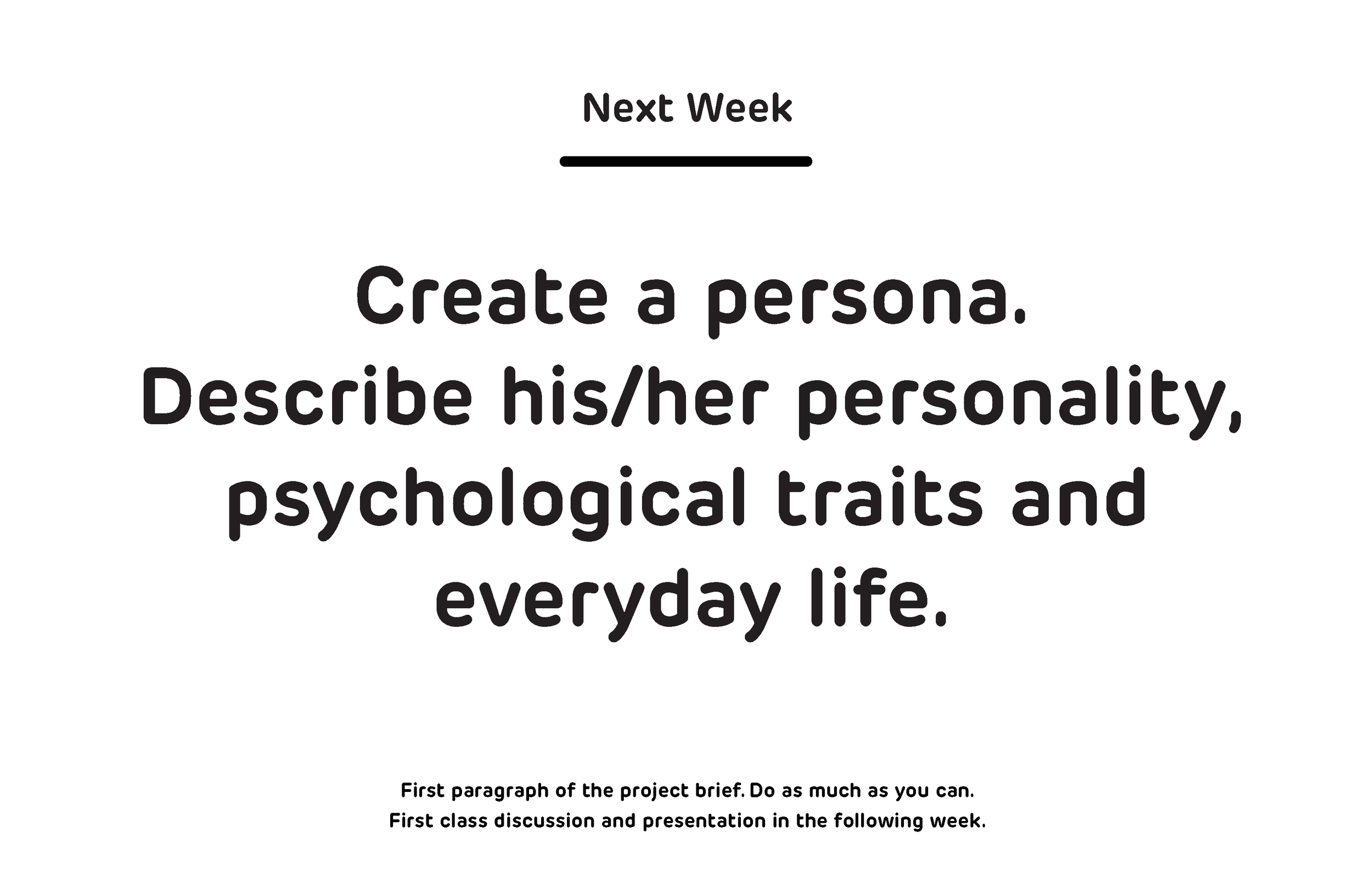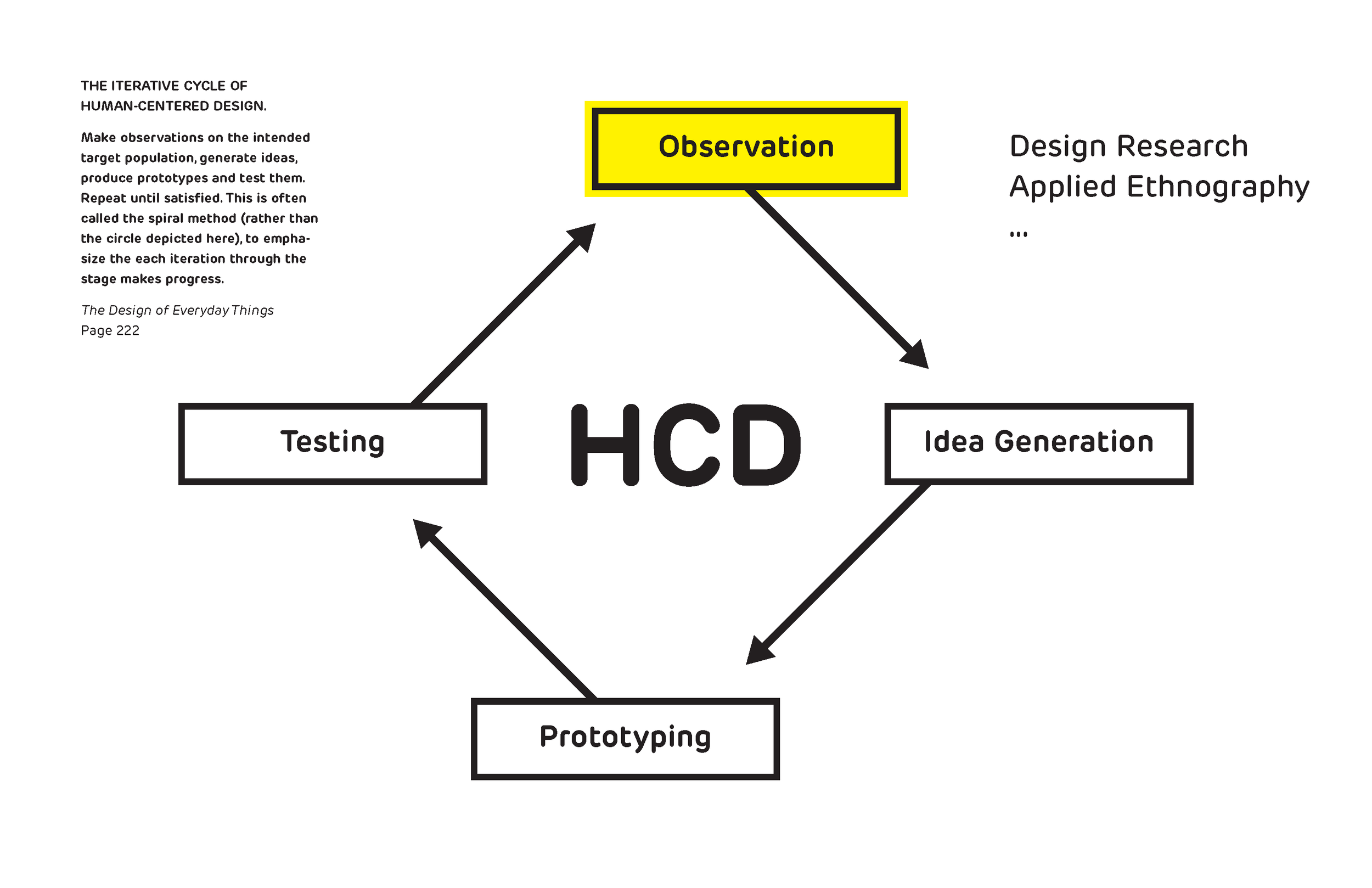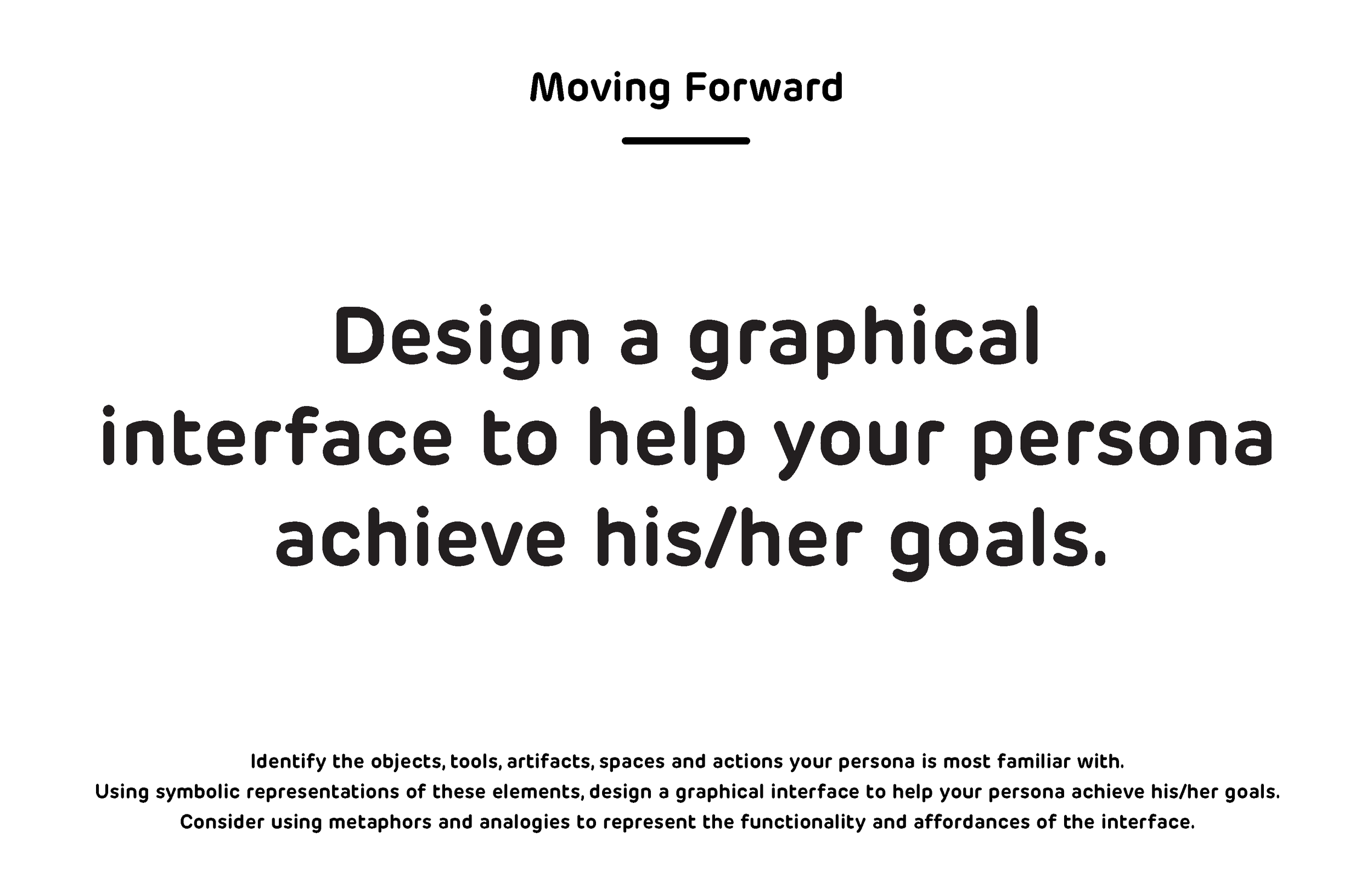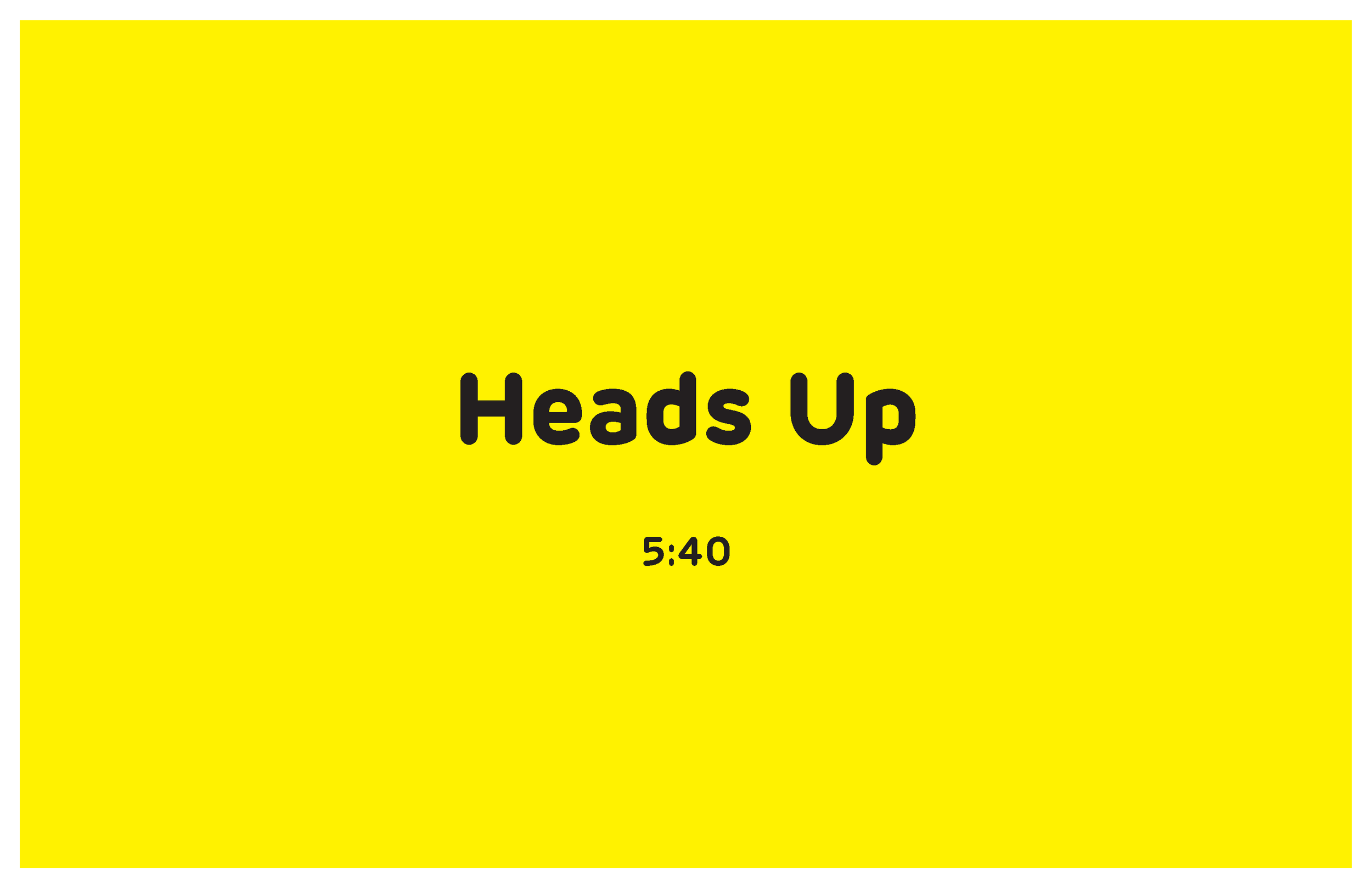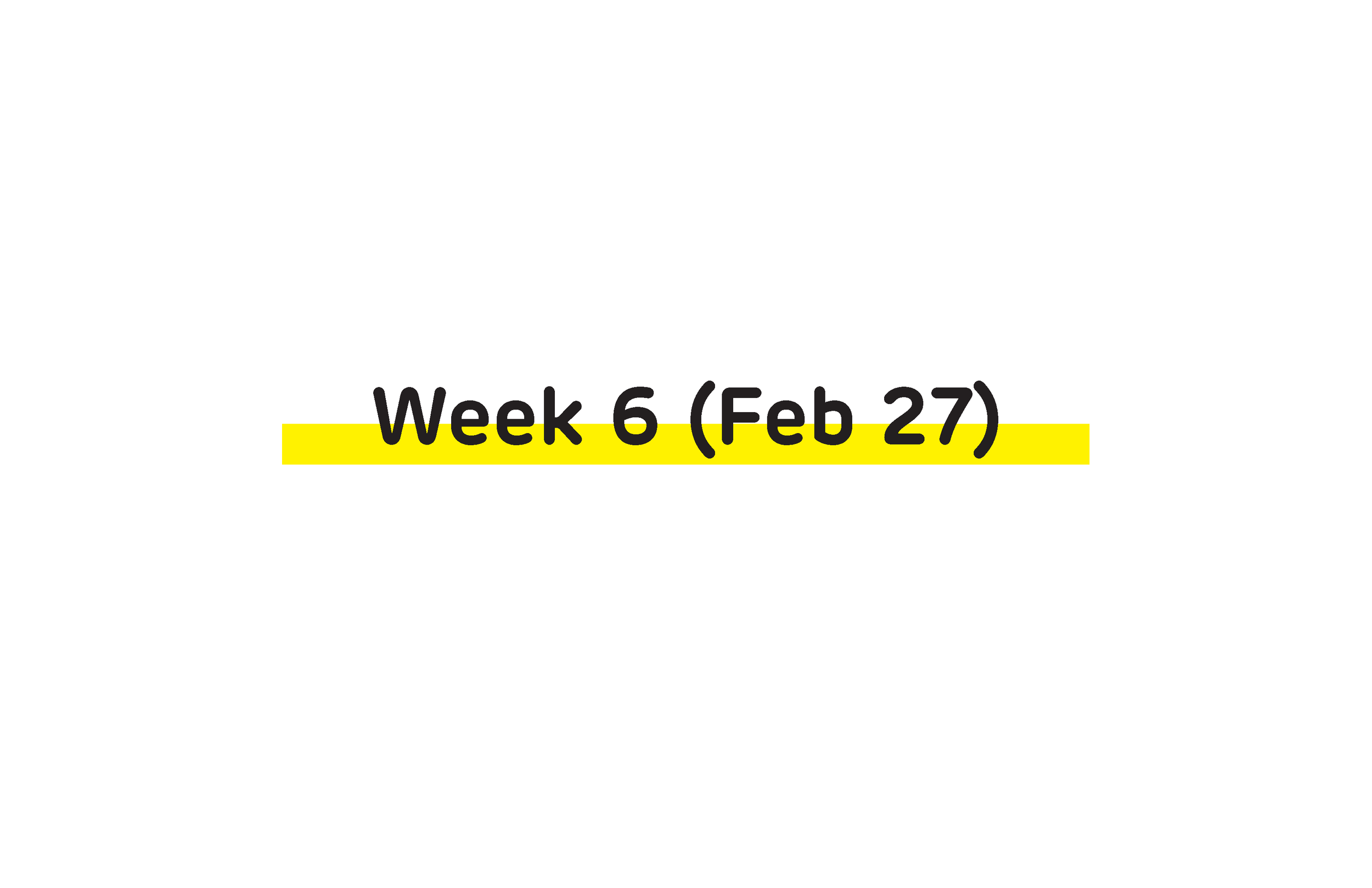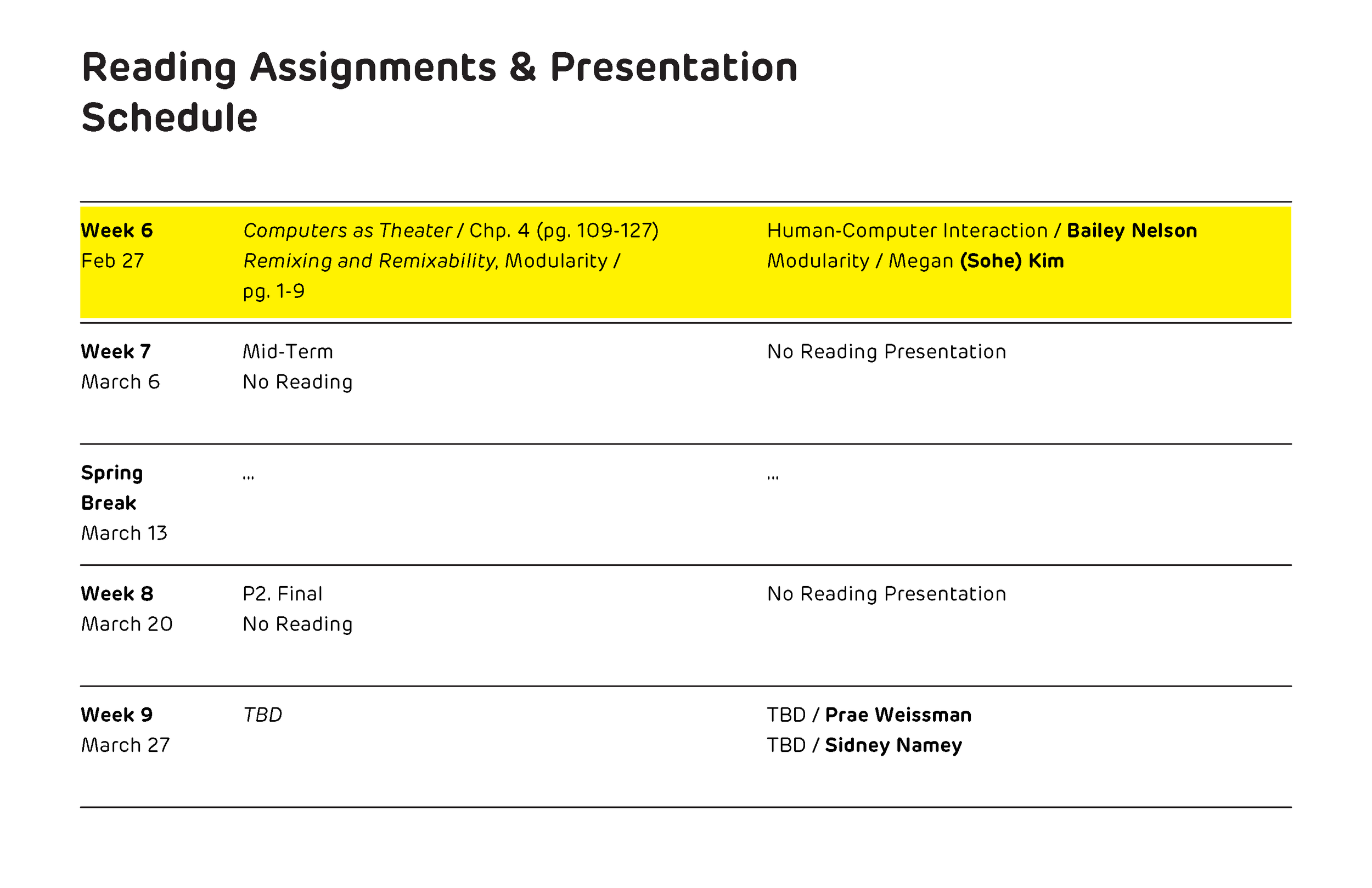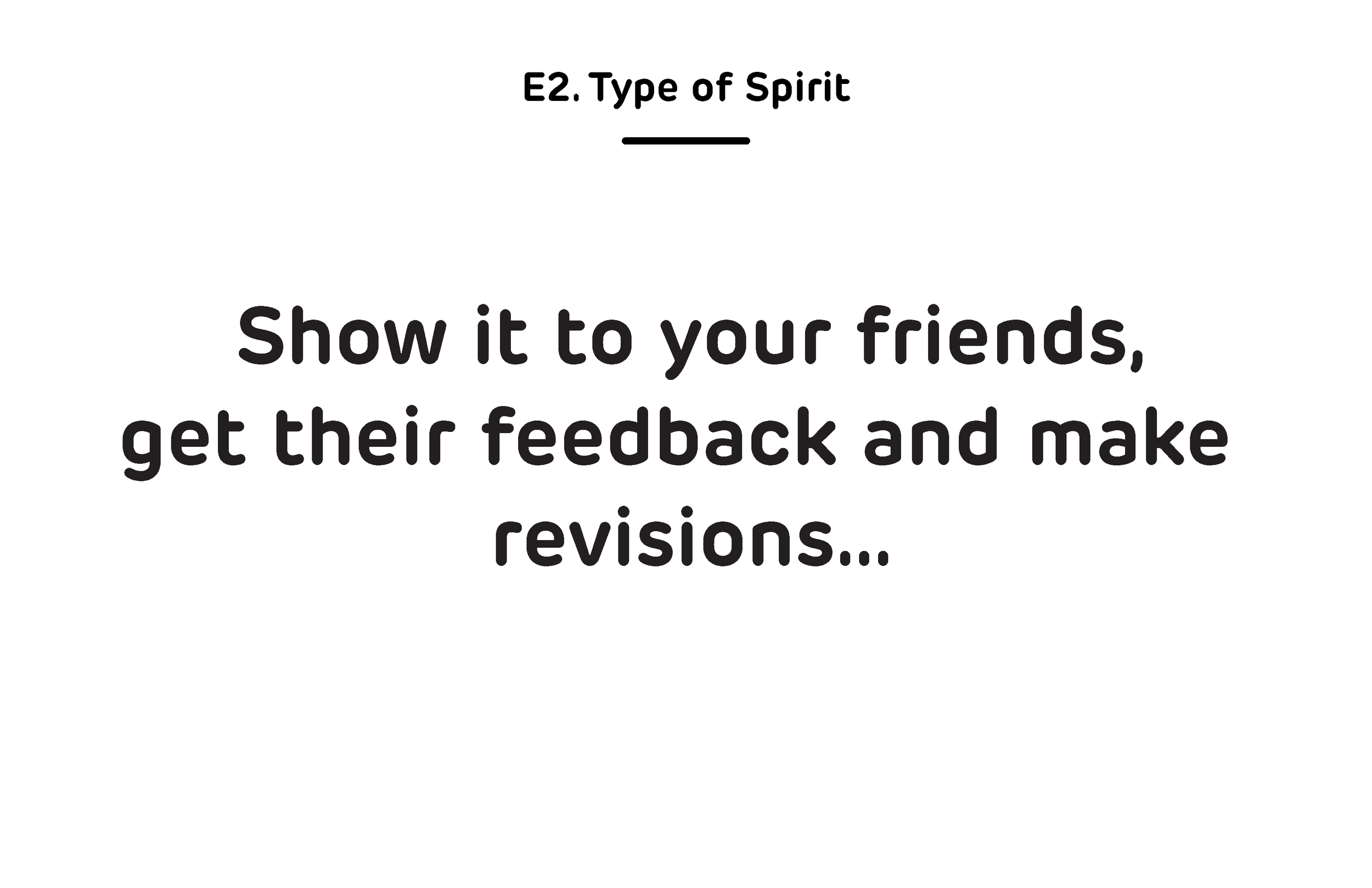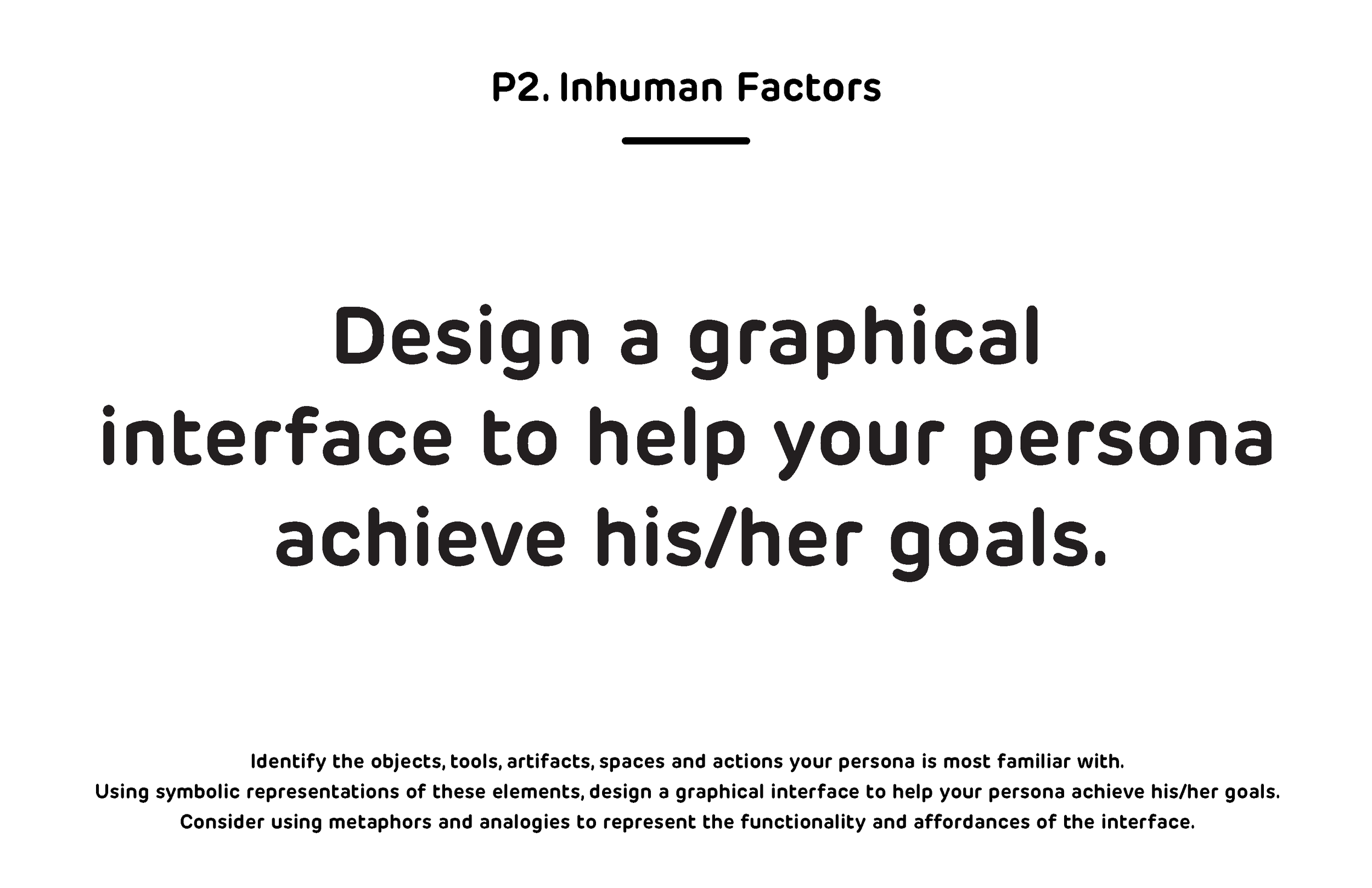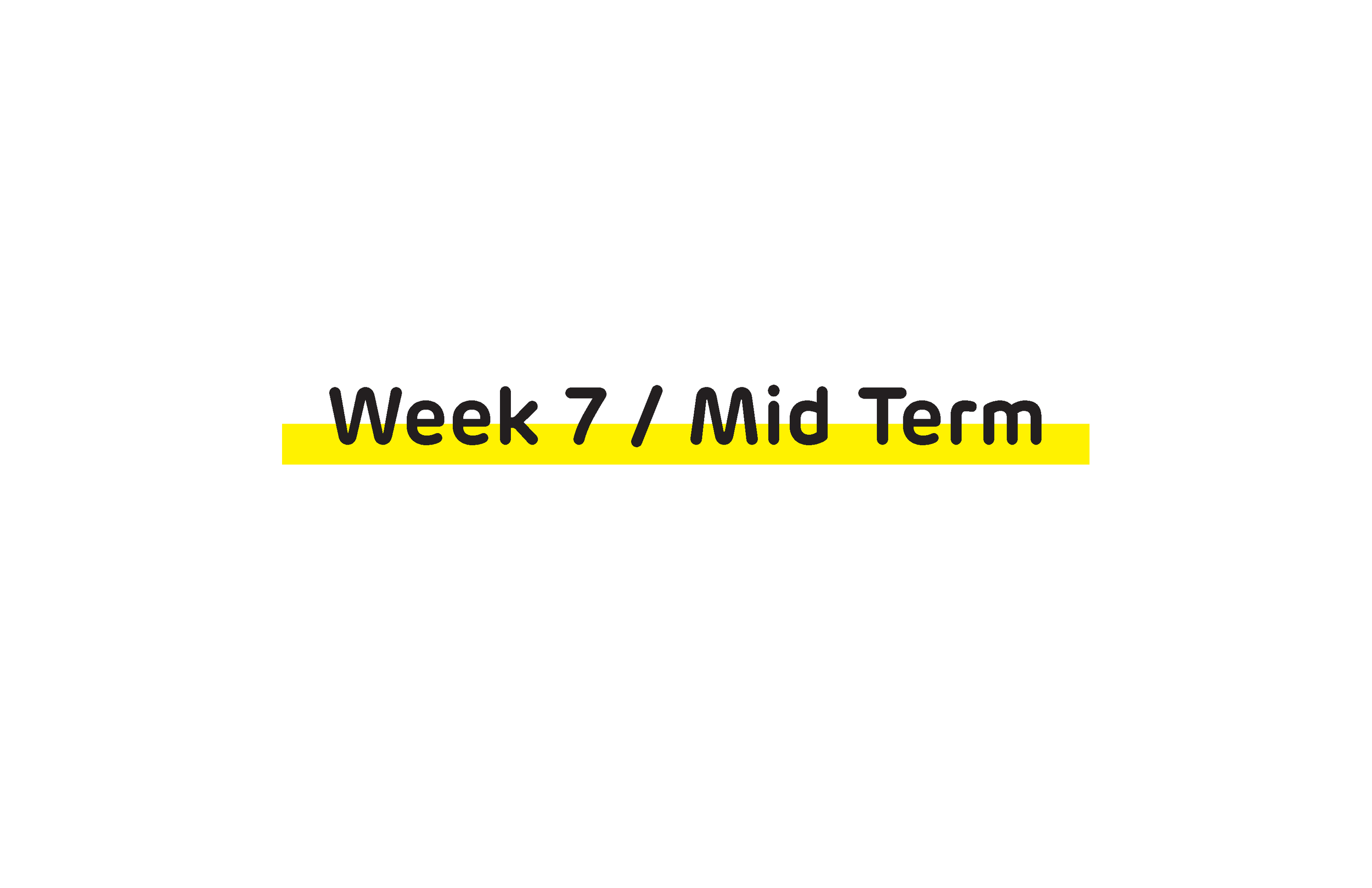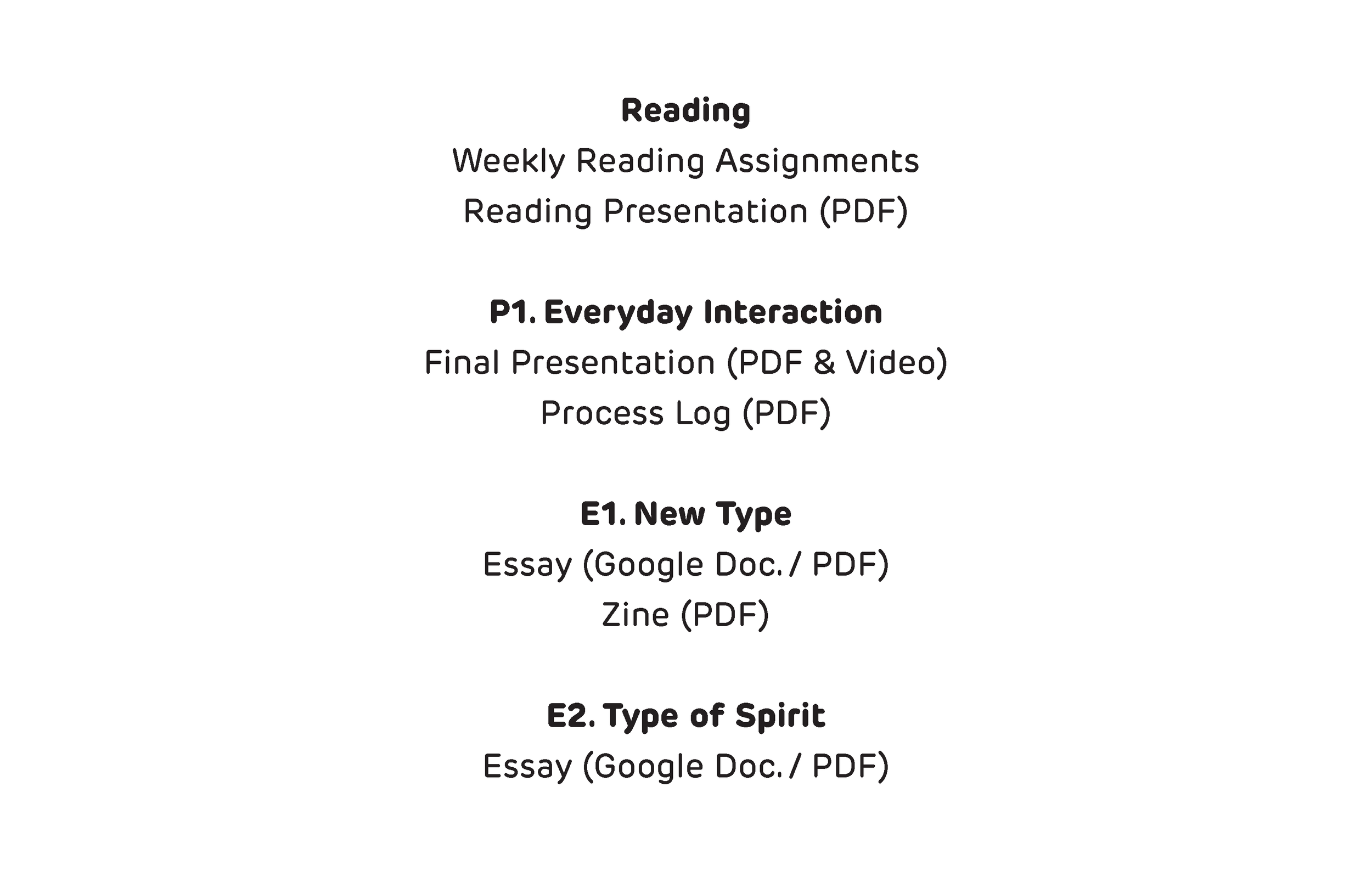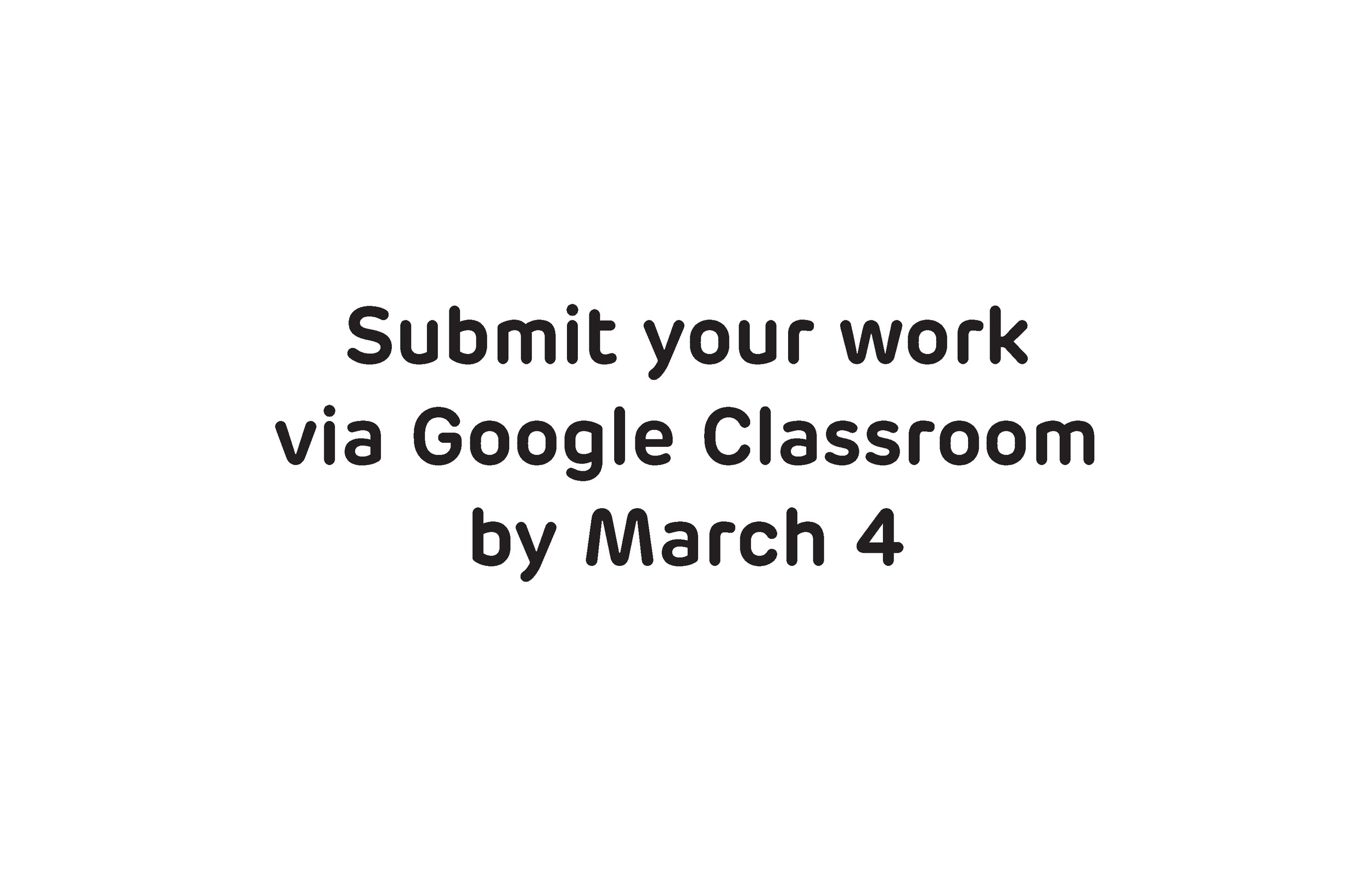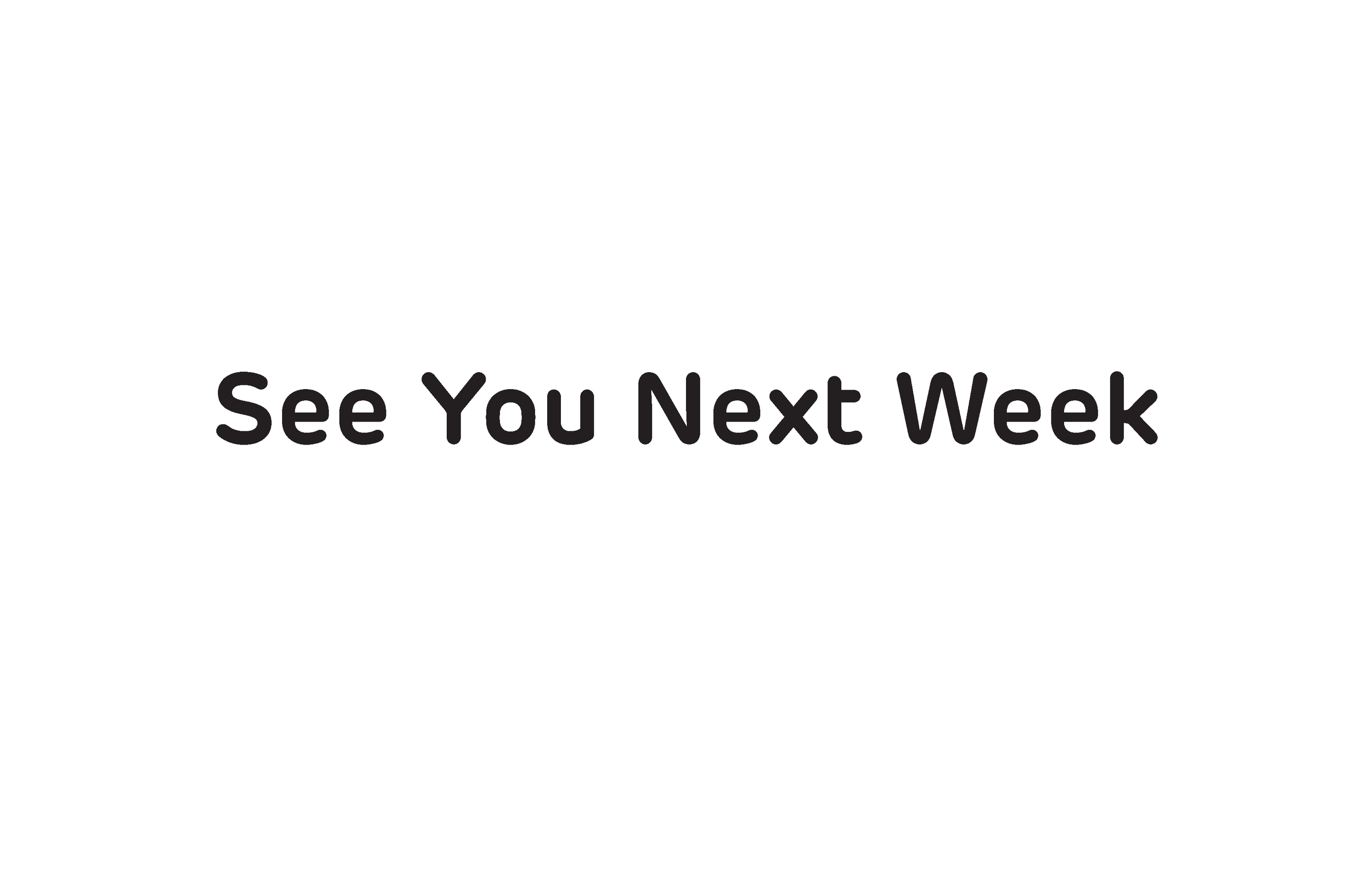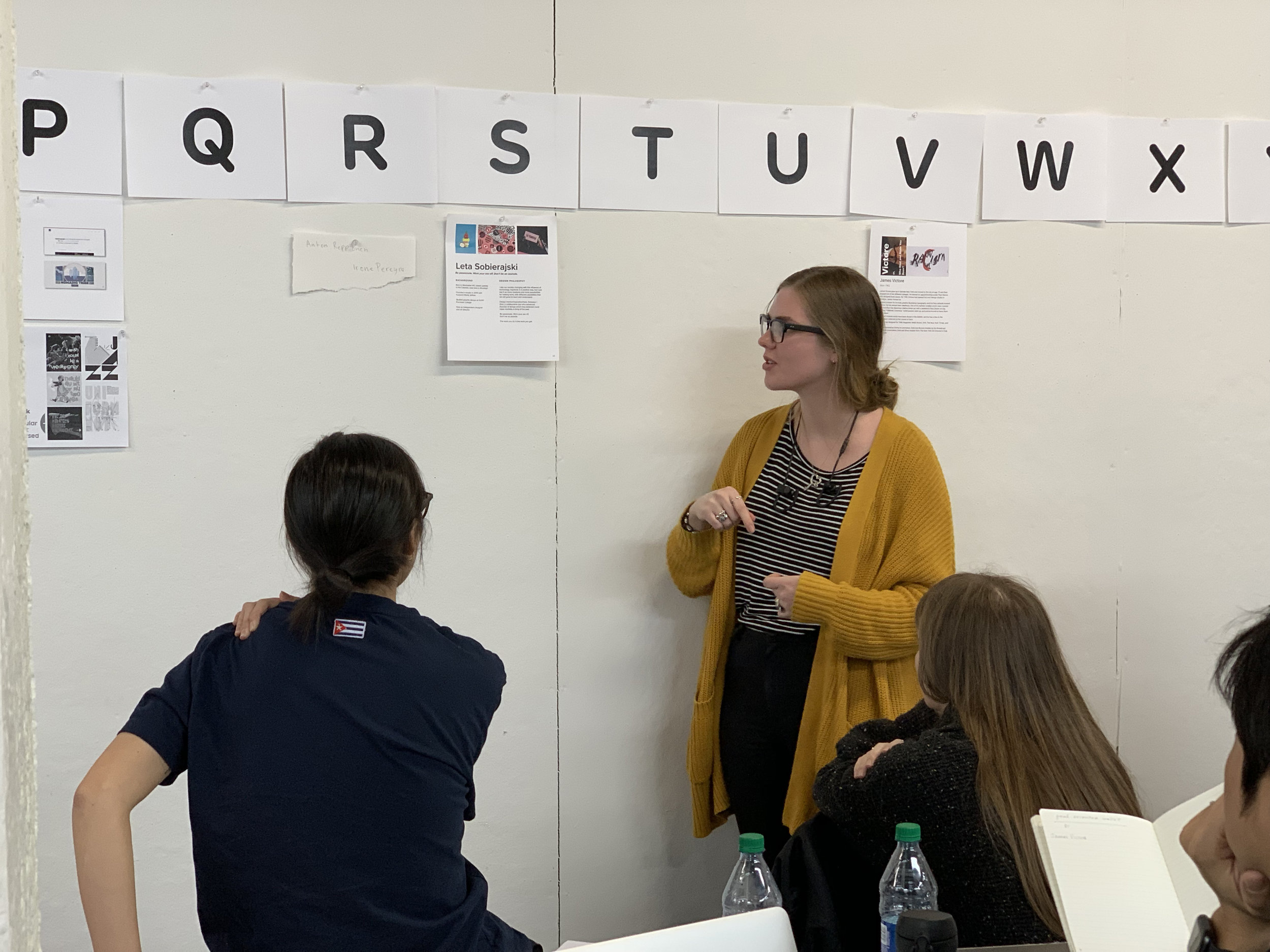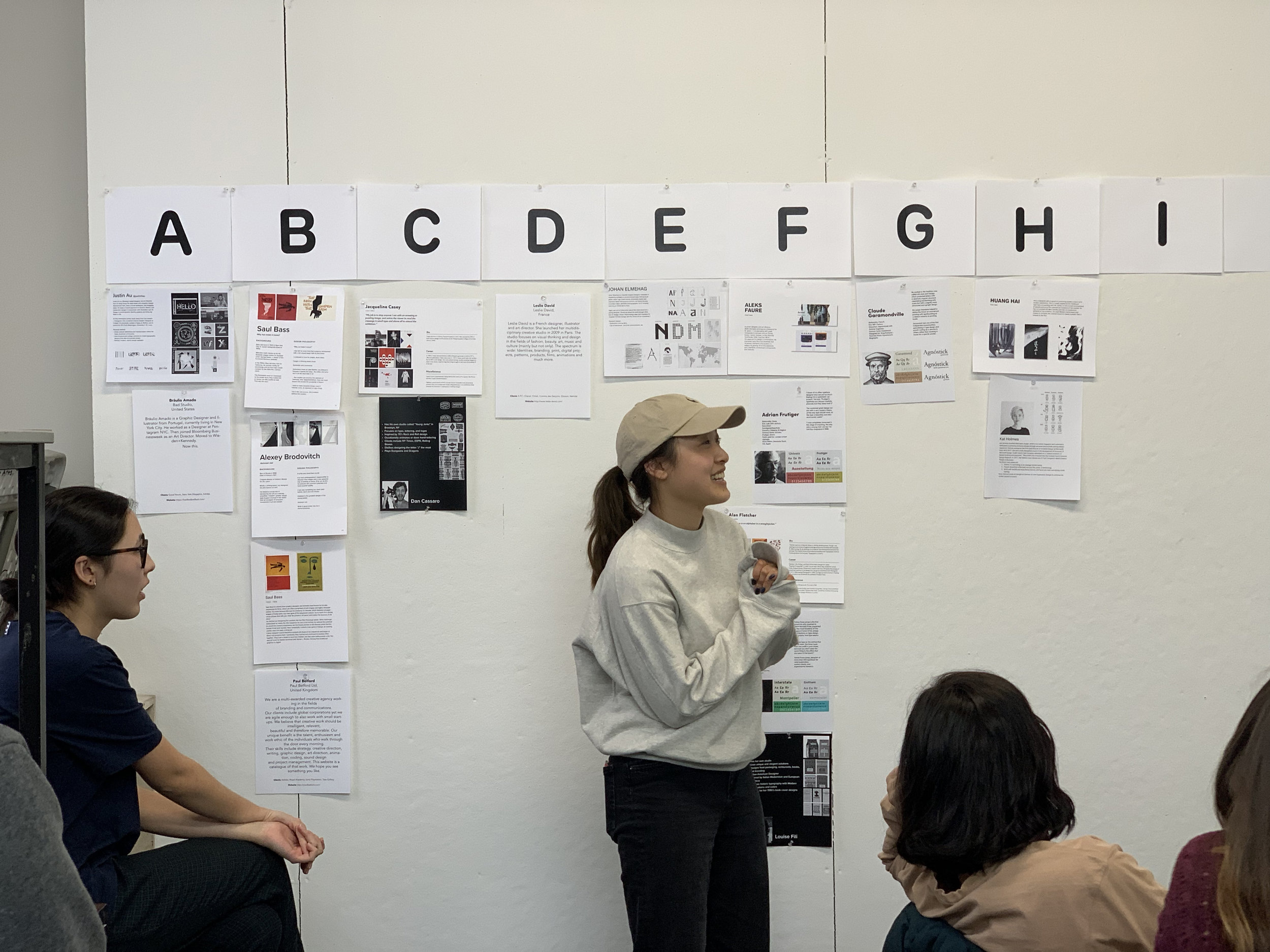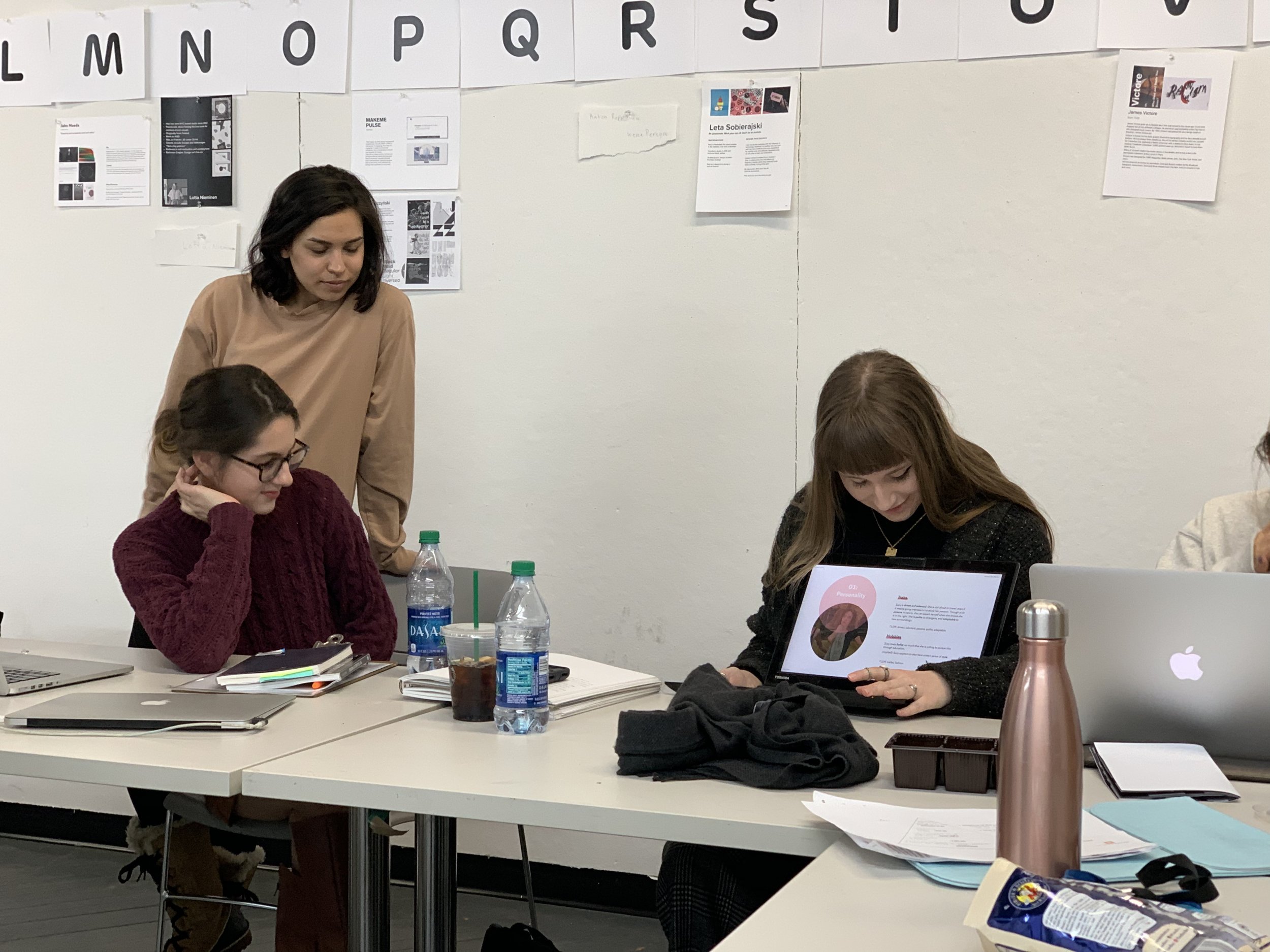Week 5. Type of Spirit
Great class.
Feel free to bring in any of the revisions that you make for project 1(Everyday Interactions) or exercise 1 (New Type).
In-class critique led to an interesting discussion, regarding whether to approach project 1 as (1) a way to solve a problem and suggest a realistic solution or as (2) an opportunity to let people re-think about the issue by raising questions about the problem. There are a lot of great speeches made by creative directors related to this discussion so hope this helps you clearing up any confusion!
Matt Wade, a creative director of Google Creative Labs, shared his design principles in one interview, and he said “It’s certainly not as simple as problem solving. Yes, that’s one thing designers do, but so do butchers and bakers and candlestick makers.” Calling the designers problem solvers narrows the scope of what we are actually capable of achieving and able to offer the audience/non-designers. Speculative design, which is a direction that was suggested for project 1, allows us, designers to probe avenues outside problem solving and shows how bigger influence that we can make with design. It’s about raising the questions to the audience and let them re-think.
“… questions, thoughts, ideas, and possibilities, all expressed through the language of design.. They probe our beliefs and values, challenge our assumptions, initiate discussions or debates and encourage us to imagine how what we call nature could be different. " - Dunne & Raby
“Let’s give ourselves the freedom to think beyond the nail-shaped problems we’ll figure out how to bang with our particular hammer; we stop looking at the world as one big design problem to be solved, and instead see it as a bunch of avenues waiting to be explored and challenged.”
The term “problem solving” is of course useful, no doubt, and provides a framework to help structure and design process. But challenge yourself. Frame the problem creatively first and respond to the problem, rather than try to solve.
For next week :
Exercise 2 Type of Spirit :
Research about your chosen type designer and analyze and write an essay about him as a designer and his /her design philosophy. What is so unique about his work? Don’t just write about the overview of his works or his general approaches. Go deeper and find the essence of the designer. It’s easy to say his works are minimal or trendy. But write about what makes his works minimal. Find your own theme and don’t be afraid to express your own opinion. Take this as an opportunity to expand your design palette. Challenge yourself!
Chosen Type Designers
Sidney - James Victore
Sohee - Braulio Amado
Bailey - August Östberg
Pam - Johan Elmehag and Justin Au
Jocelyn - Dan Cassaro
Lila - Leta Sobieraiski or Johan Elmehag
Rest of the designers that the class had shared during class are uploaded in this link. If you were absent, feel free to look through and choose one among them. (but still need to hand in your three researched designers)
Submit your essay via google classroom by Feb 27. Please submit your essay using Google doc and make Daisuke’s life easier..
Project 2 Inhuman Factors :
Research and observe. Unlearn about the subject and thwart your own preconceived ideas before jumping into research stage. Ask bunch of questions and question what you thought you knew. Questions help us undo preconceived choices, disrupt assumptions, and turn your attention away from the familiar, and eventually help you have an open mind.
For the persona, working with a fictional persona will have limitation since it’s always going to be based on your assumption. Don’t just assume and spend some time observing. And read some books about achievements, goals. It may help you find a new perspective. (Daisuke’s suggestion : “Grit: The Power of Passion and Perseverance” by Angela Duckworth)
Graphical interface to help your achieve his/her goals
identify the objects, tools, artifacts, spaces and actions your persona is most familiar with
Using symbolic representations of these elements, design a graphical interface to help your persona achieve his/her goals
Consider using metaphors and analogies to represent the functionality and affordances of the interface.
Don’t worry about the aesthetics/visual style of the graphical interface. Focus more on the concept part: achieving goals, how to achieve the goal, what the real goal is, more about analytical side of it before designing.
Week 7 Mid-Term Review / One-on-one Review
We will have a one-on-one review on week 7. Have all the following submitted via Google classroom by March 4 Monday.
Reading assignments
weekly reading assignments (google doc. google classroom)
reading presentation (if you have already presented - pdf)
P1. Everyday Interaction
Final presentation (pdf & video)
Process log (pdf)
E1. New Type
Essay (Google Doc/google classroom)
zine (pdf) and physical copy
E2. Type of Spirit
Essay (Google Doc. Google Classroom)
Weekly Reading Assignment / Presenters
Hand in your answers before the class begins : https://classroom.google.com/u/1/w/Mjg0MjY0MjgwMDVa/t/all
Late submission penalty : -7 points for each week the submission is late
Computers as Theater / Chp. 4 (pg.. 109 - 127)
Remixing and Remixability. Nodularity / pg. 1-9
Human-Computer Interaction / Bailey
Modularity / Sohee
Class Presentation
